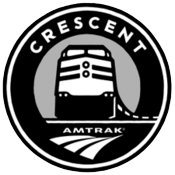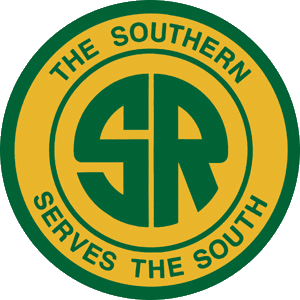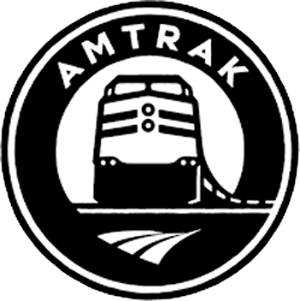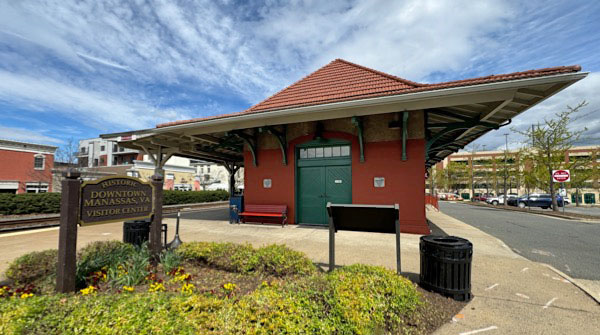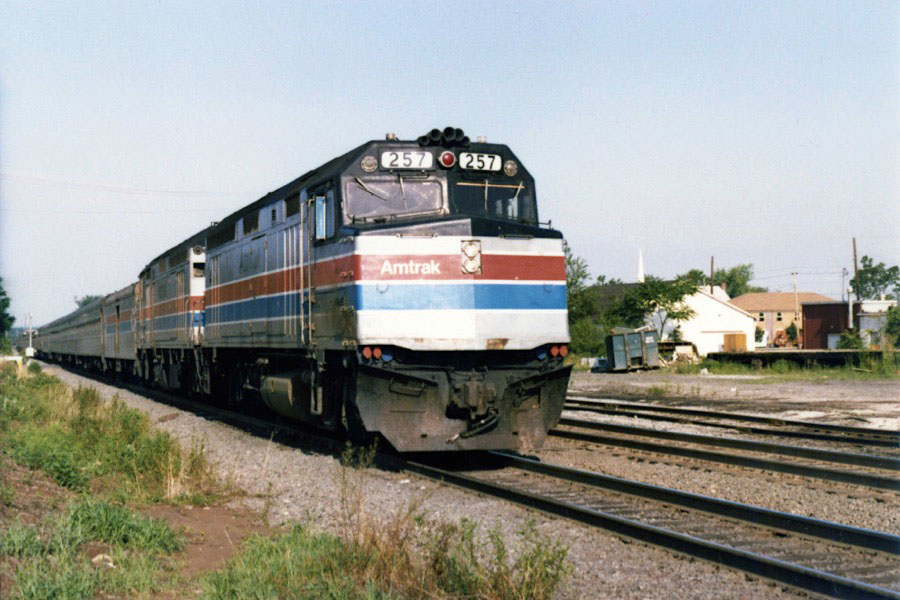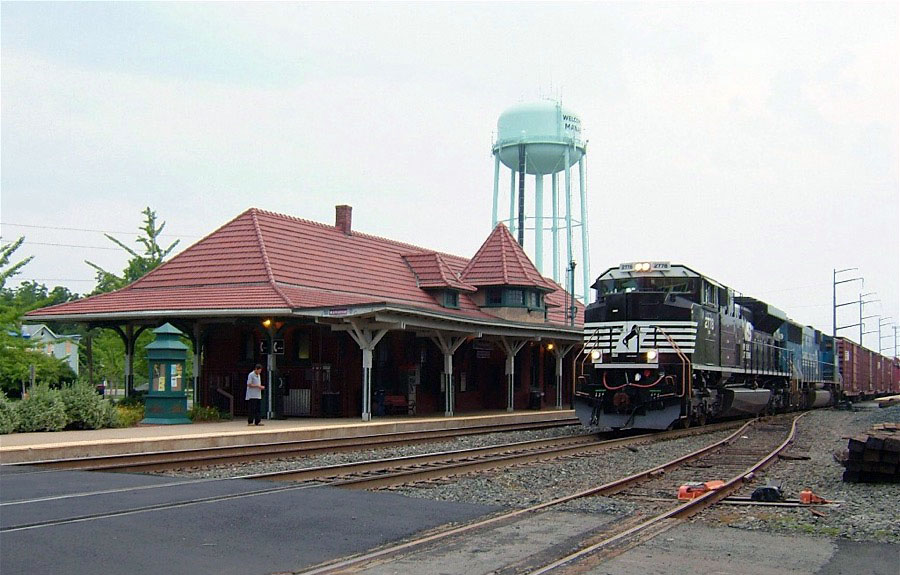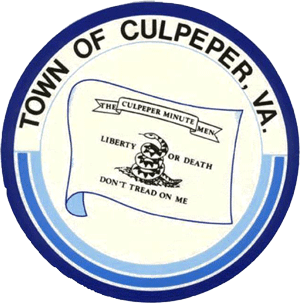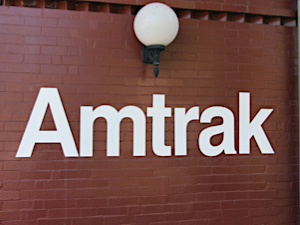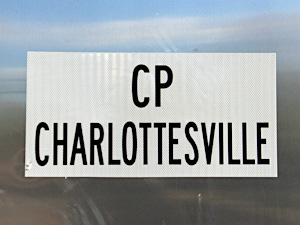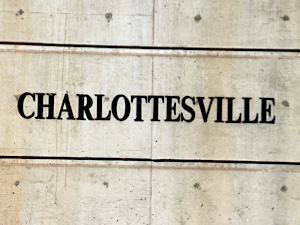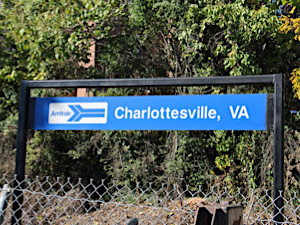 |
Amtrak's Crescent Northern States |
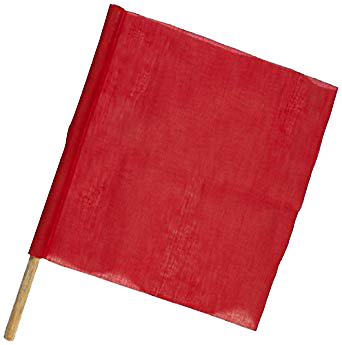
jump to a
flag stop
- New York City
- Newark
- Trenton
- Philadelphia
- Wilmington
- Baltimore
- Washington
- Alexandria
- Manassas
- Culpepper
- Charlottesville
- Lynchburg
- Danville
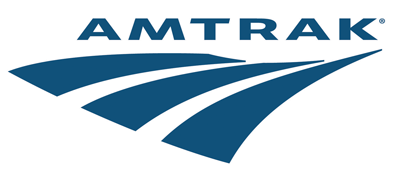

RWH
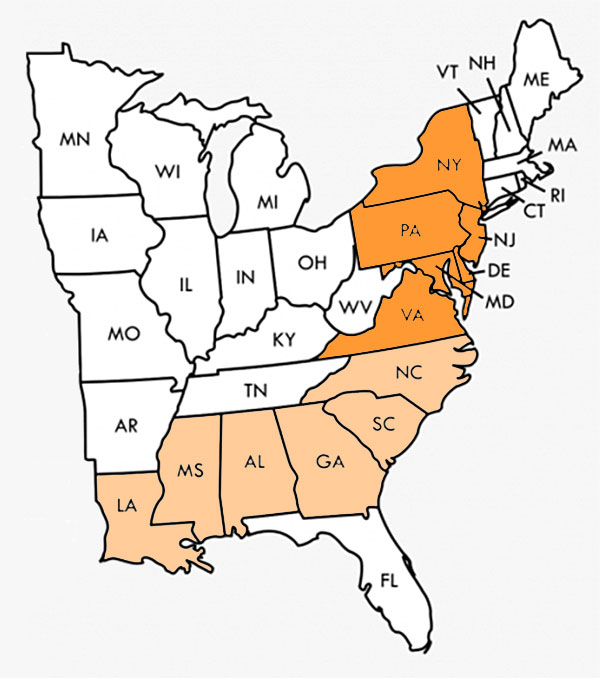
RWH

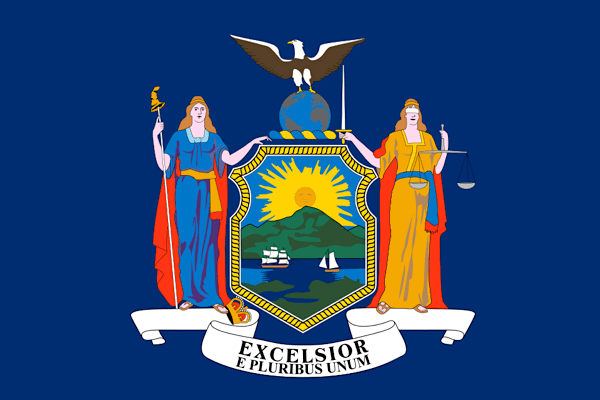 New York
New York
 New York, NY
New York, NY
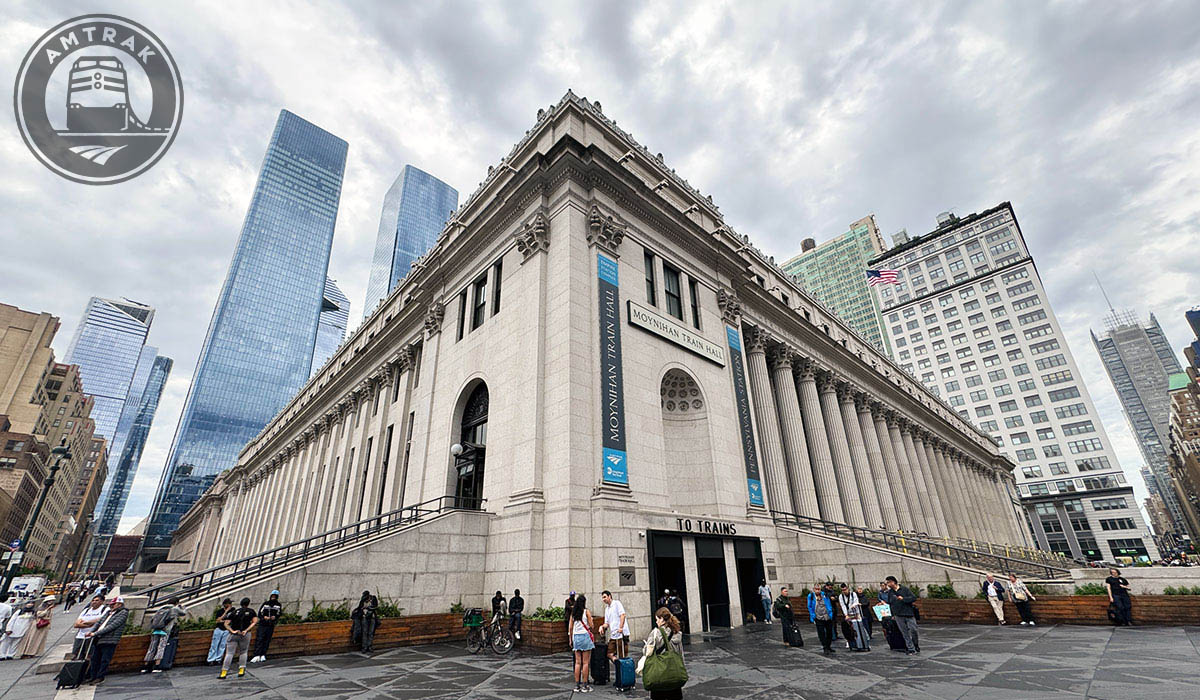
New York, NY / May 2024 / RWH
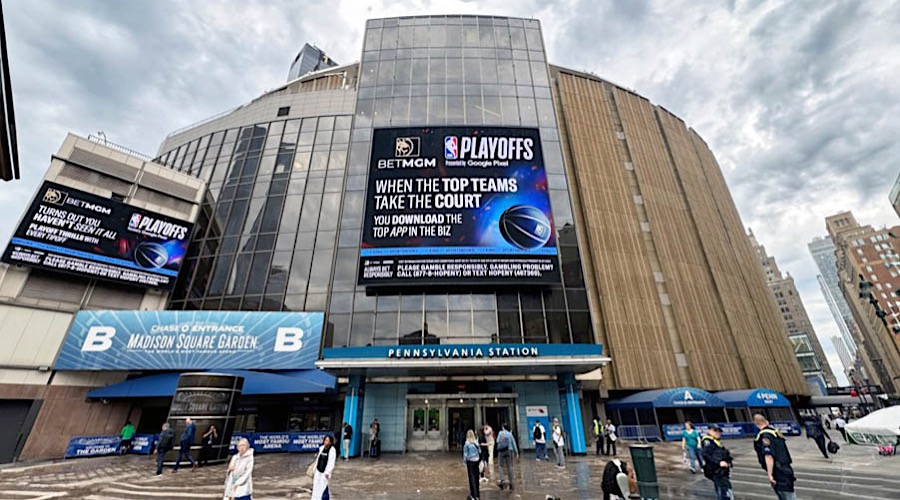
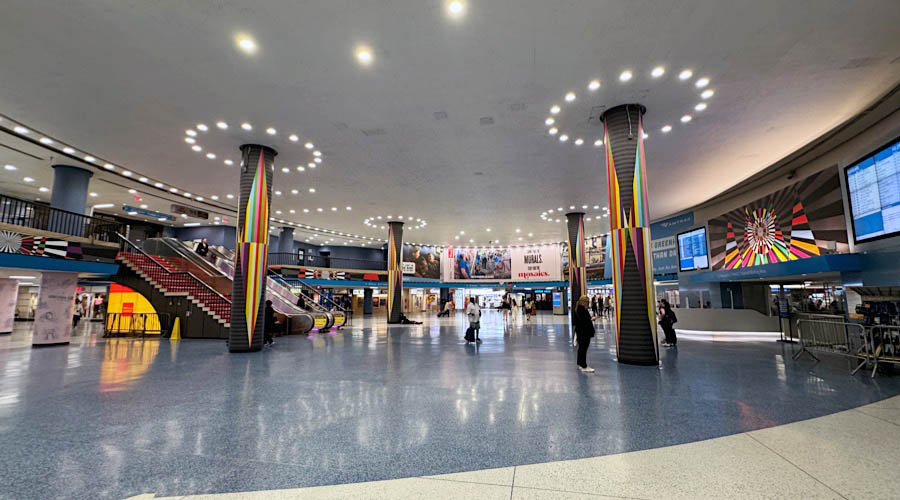

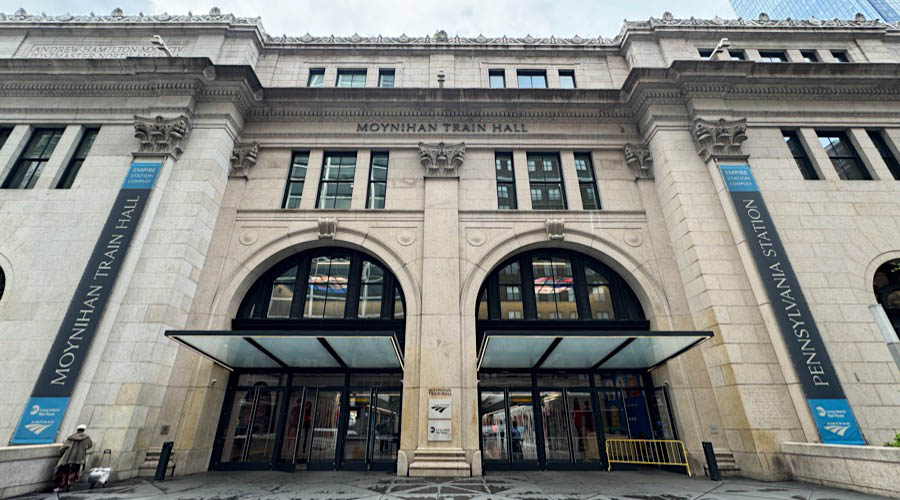
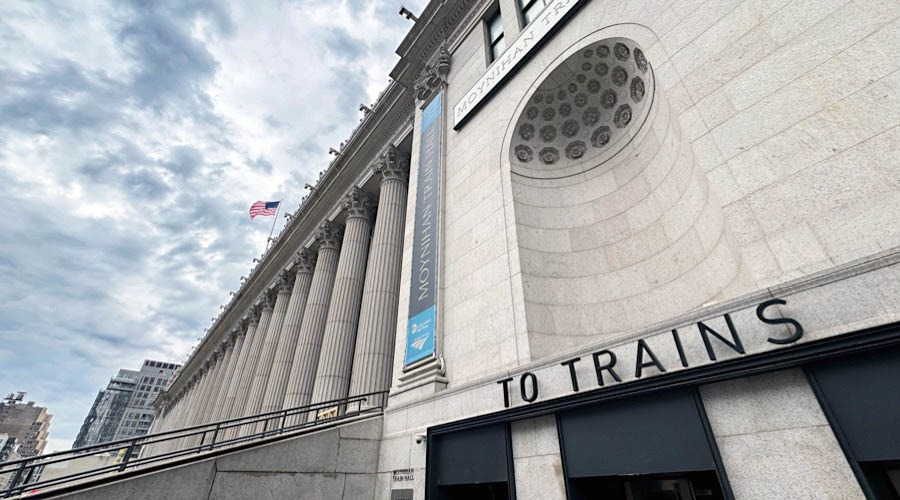
RWH

See our complete New York Penn Station scrapbook in Amtrak Great Stations
 Pennsylvania
Pennsylvania
 Philadelphia, Pa
Philadelphia, Pa
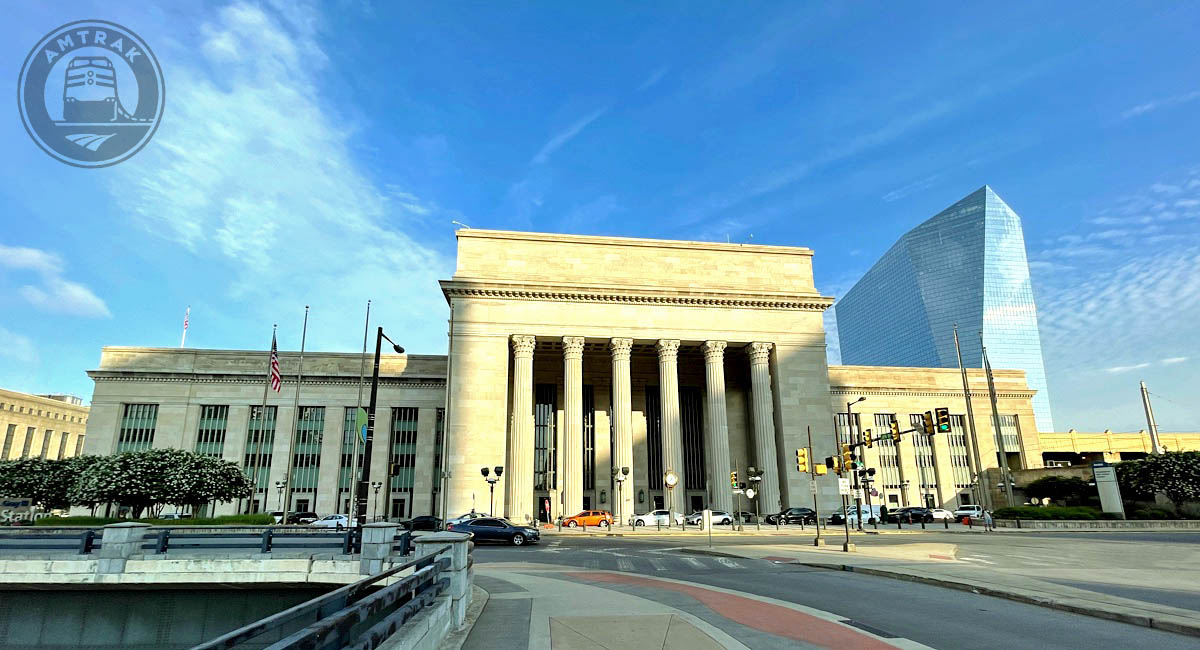
Philadelphia, Pa / Jul 2022 / RWH
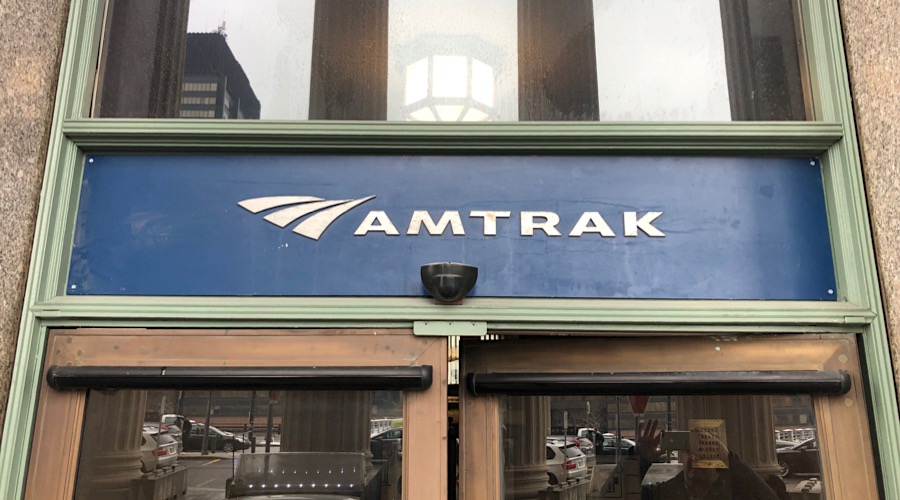
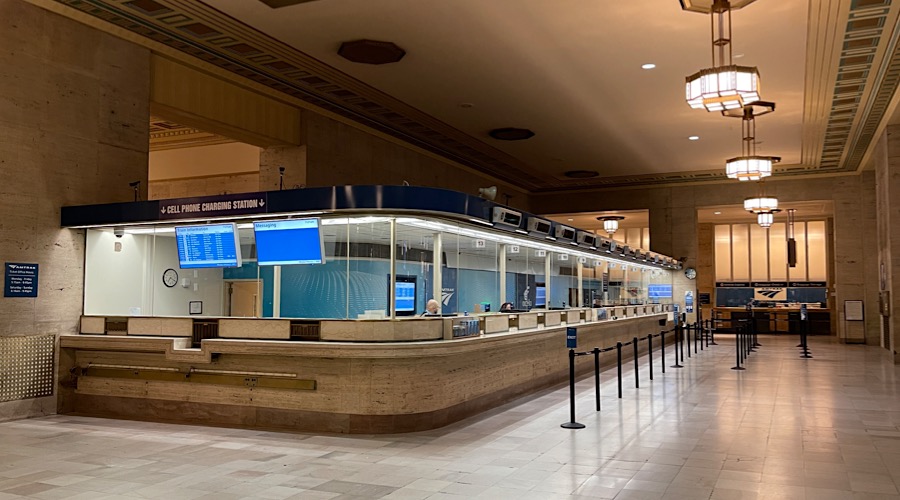

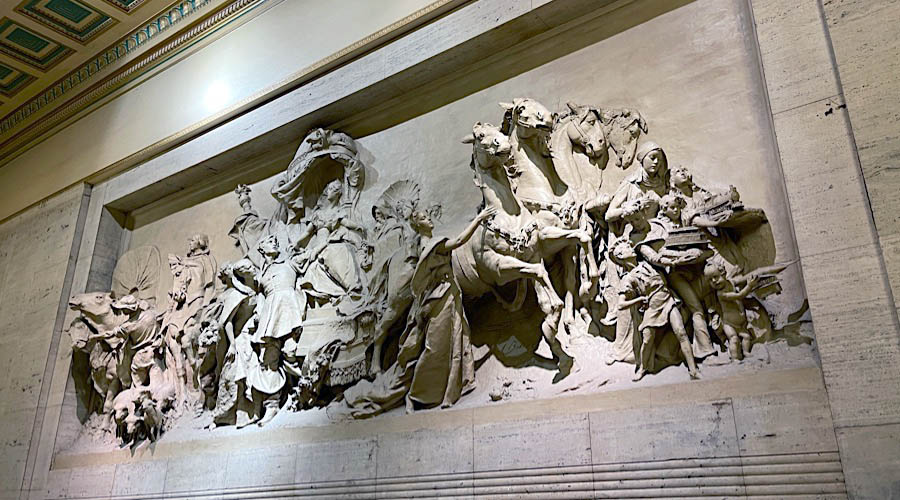
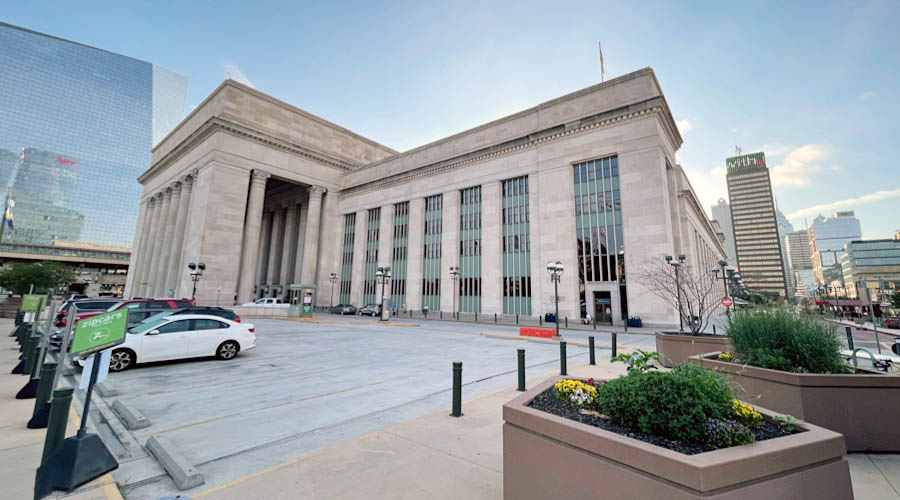
RWH

See our complete Philadelphia 30th Street Station scrapbook in Amtrak Great Stations
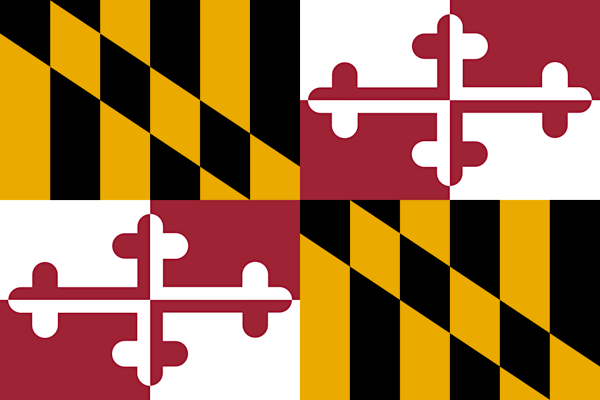 Maryland
Maryland
 Baltimore, Md
Baltimore, Md
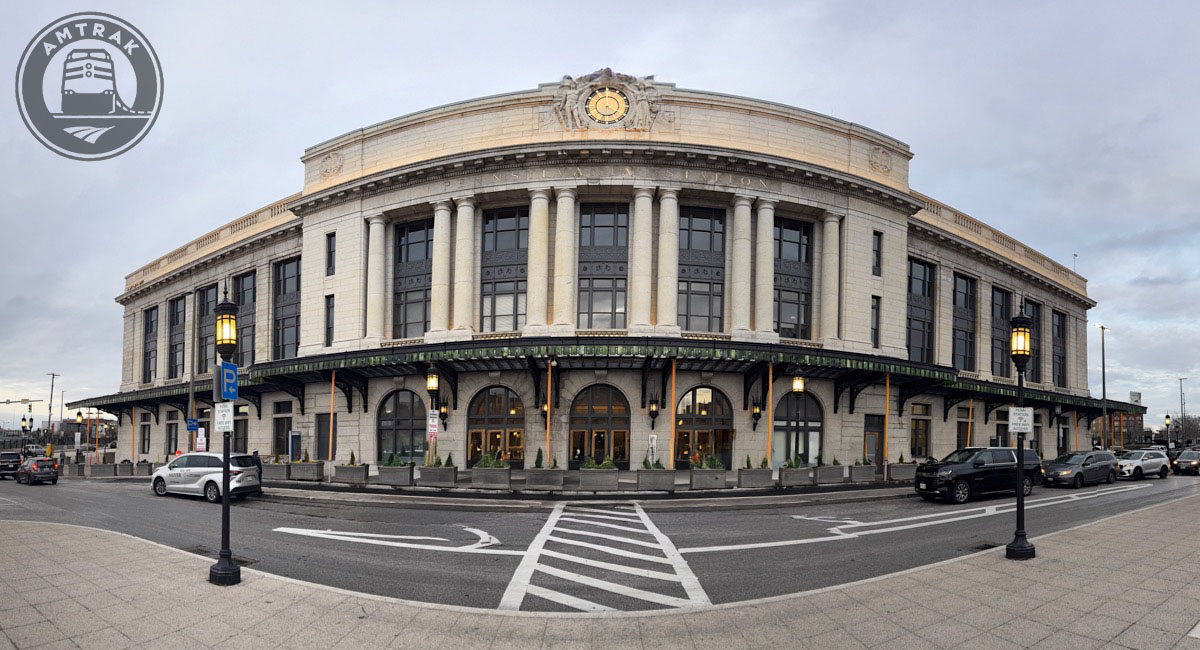
Baltimore, Md / Dec 2024 / RWH
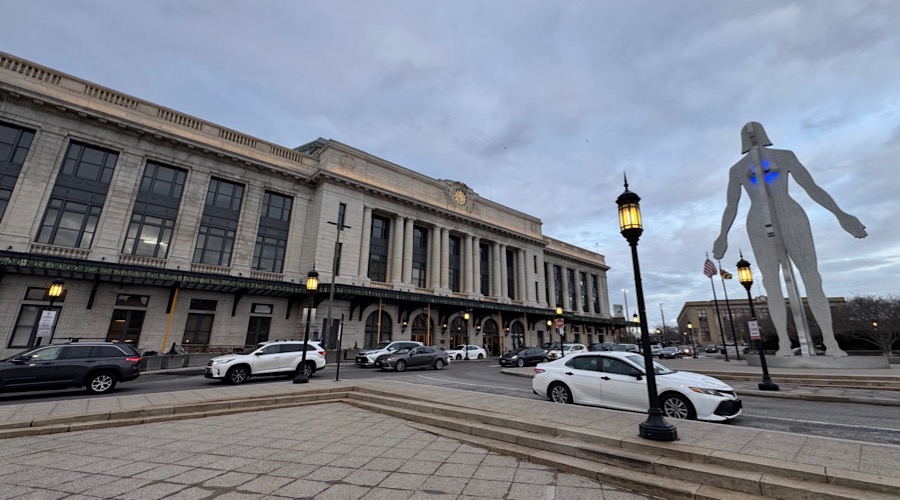
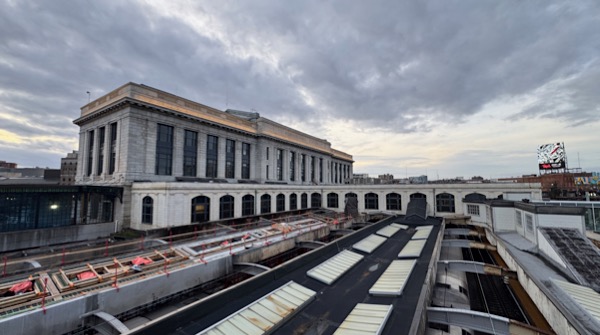
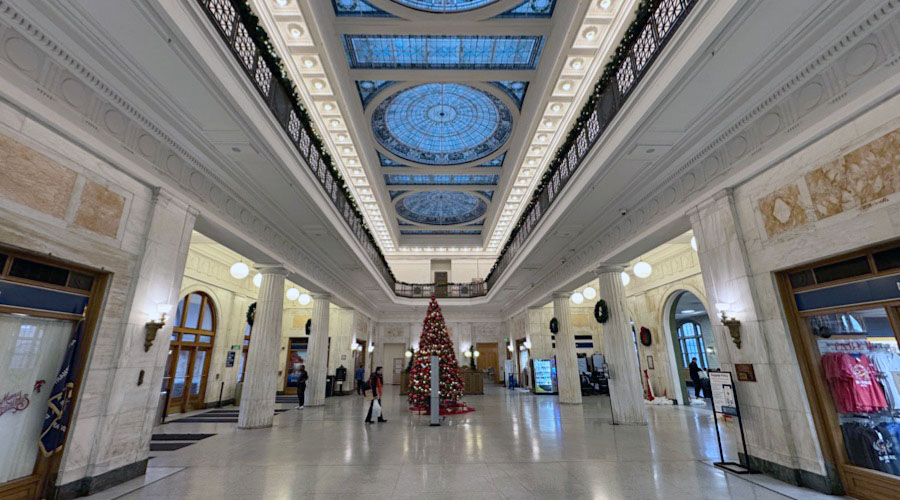
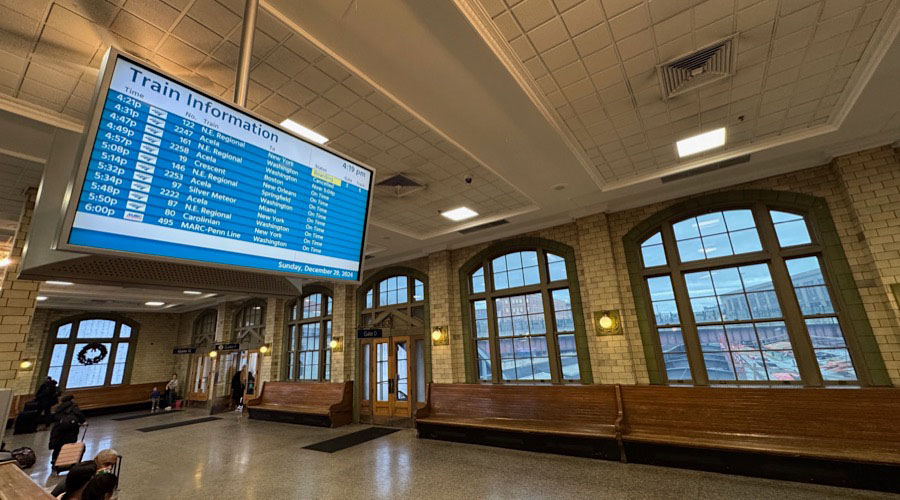
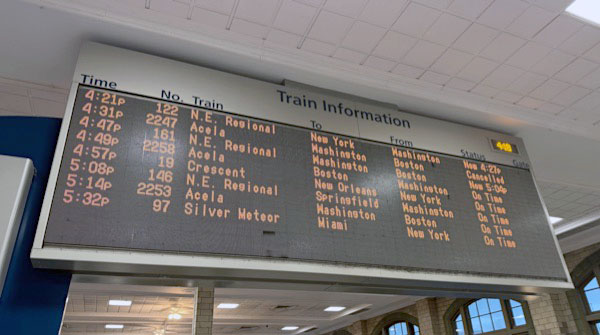
RWH

See our complete Baltimore Penn Station scrapbook in Amtrak Great Stations
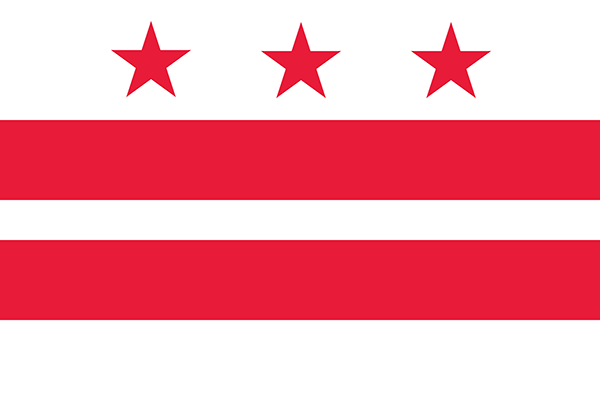 Washington DC
Washington DC
 Washington DC
Washington DC
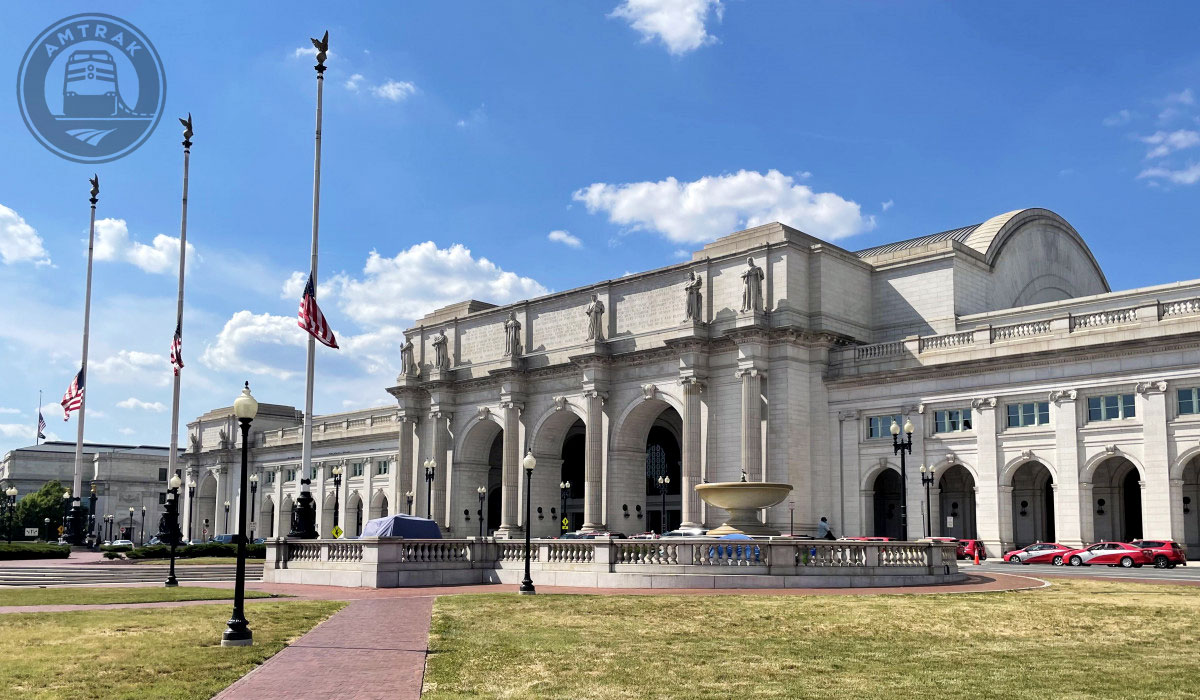
Washington, DC / Aug 2024 / RWH
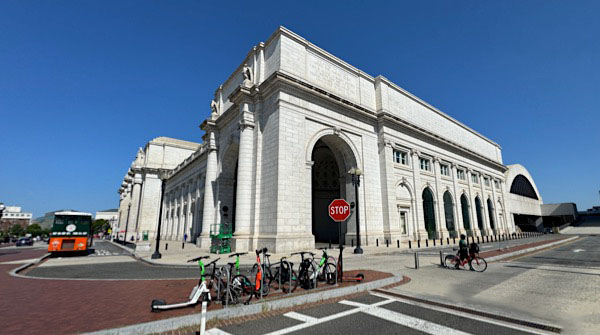
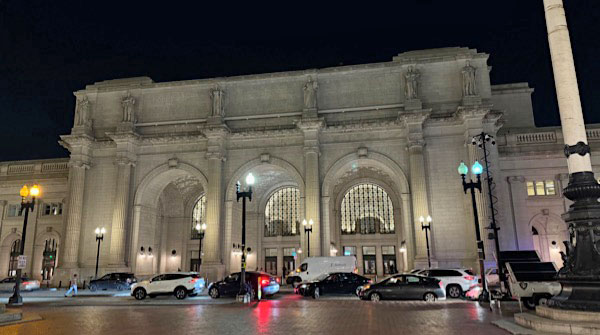
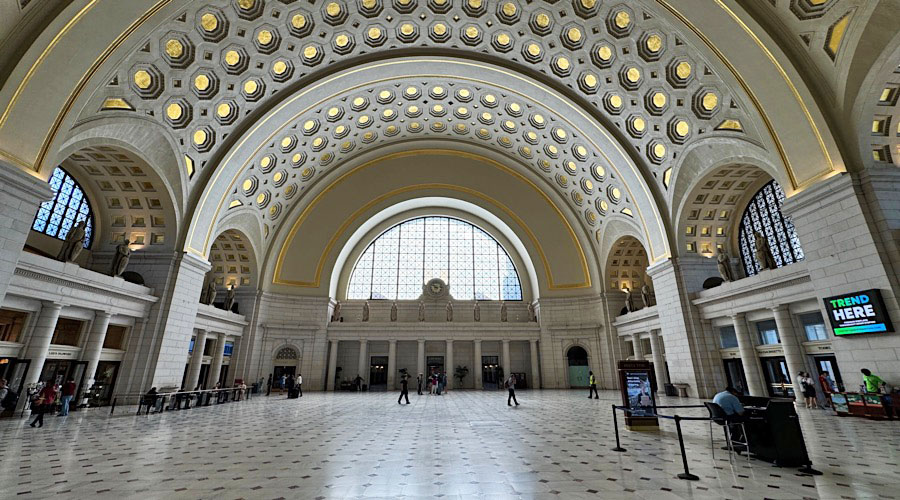
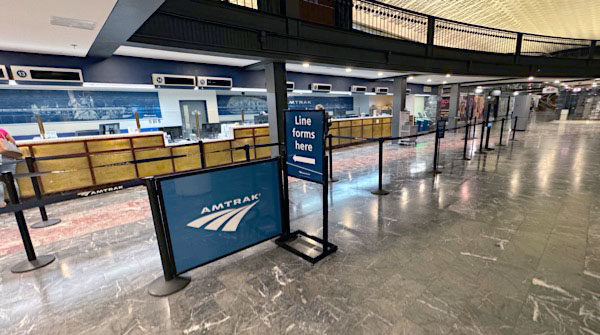
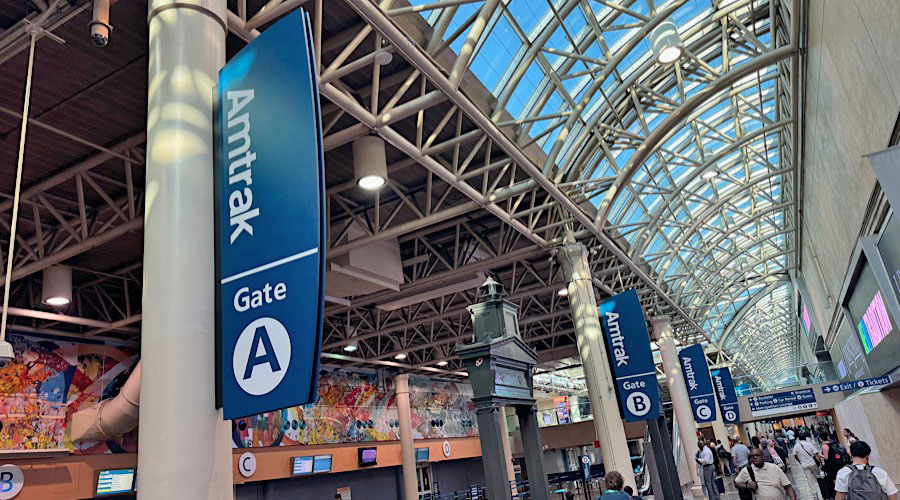
RWH

See our complete Washington Union Station scrapbook in Amtrak Great Stations
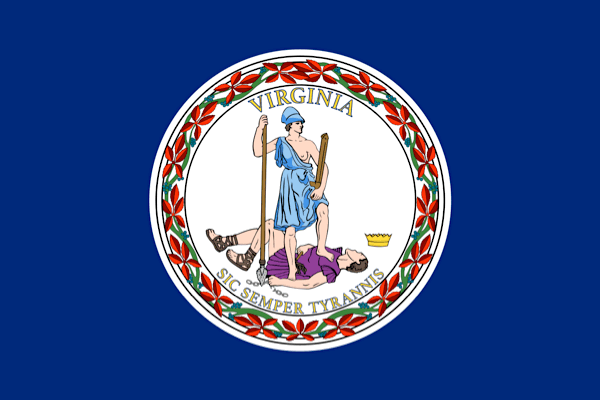 Virginia
Virginia
 Manassas, Va
Manassas, Va
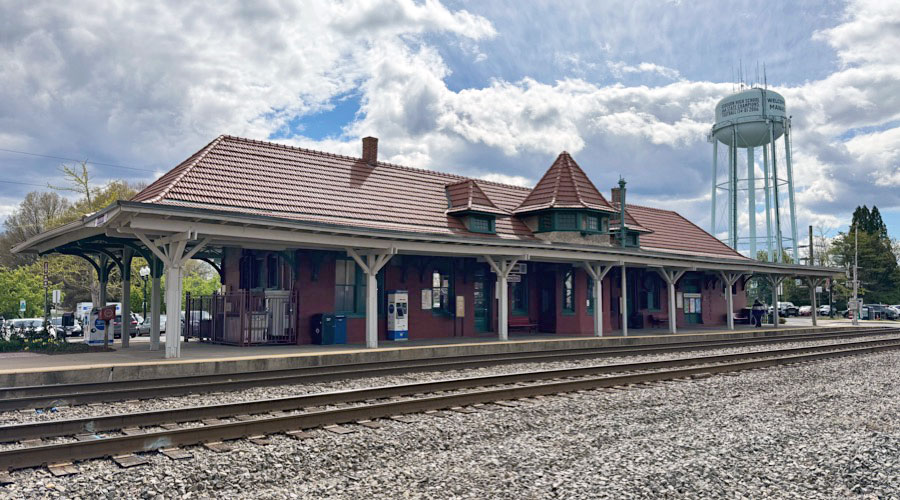
Manassas, Va / Apr 2024 / RWH
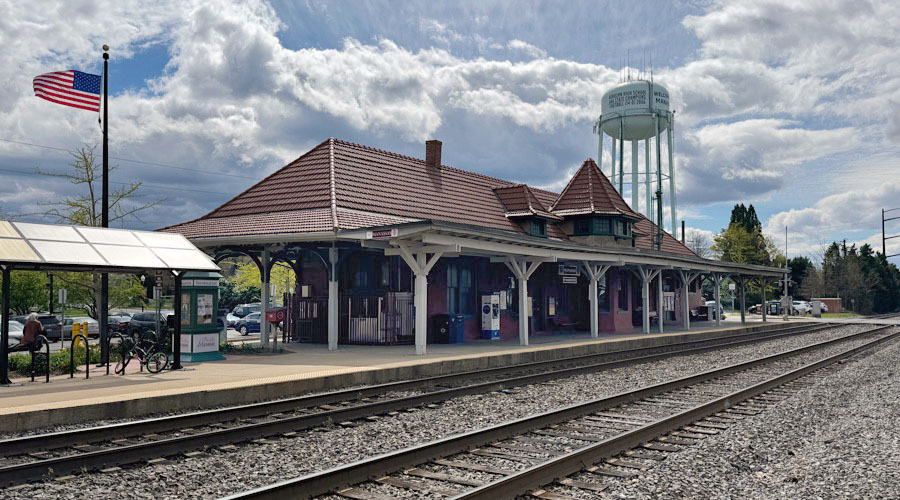
Manassas, Va / Apr 2024 / RWH

Click to see the Manassas depot area plotted on a Google Maps page
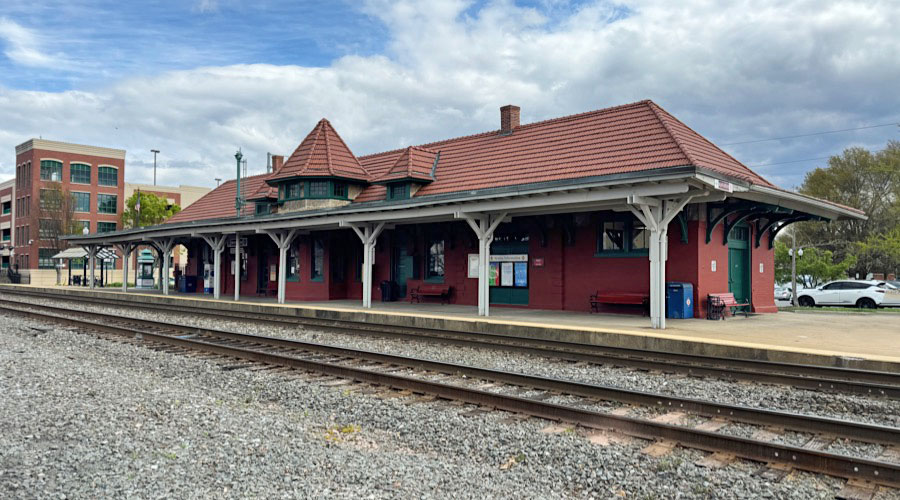
Manassas, Va / Apr 2024 / RWH

Manassas, Va / Apr 2024 / RWH
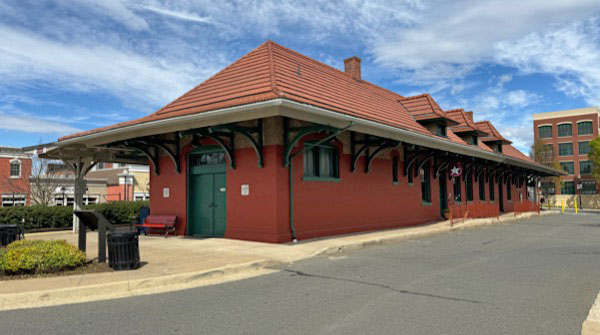
Manassas, Va / Apr 2024 / RWH
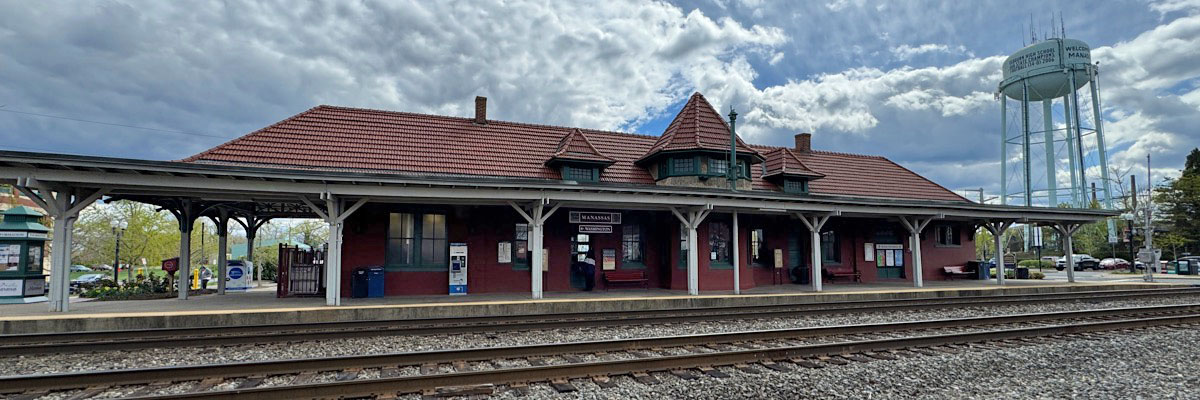
Manassas, Va / Apr 2024 / RWH

1987 Amtrak timetable / collection
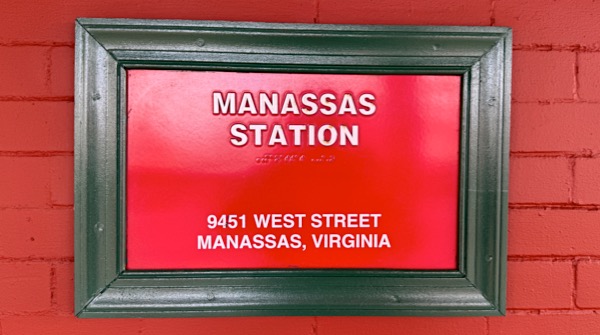
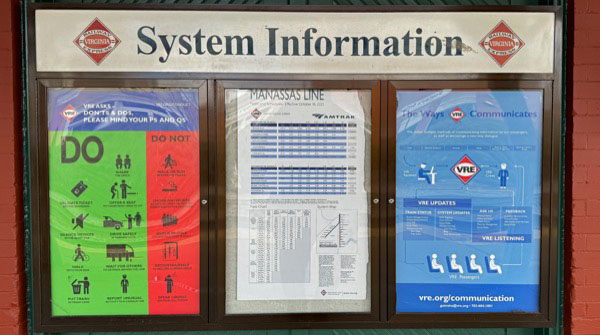

Manassas, Va / Apr 2024 / RWH
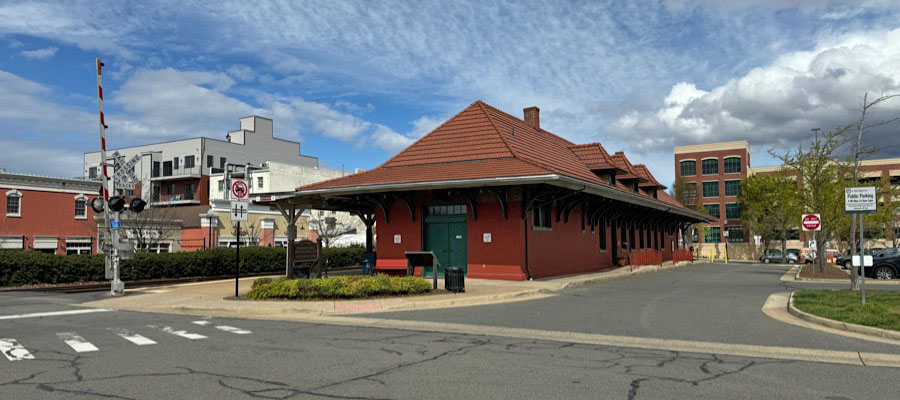
Manassas, Va / Apr 2024 / RWH

 fter the Civil War, the first depot on the present site was a long frame building constructed in the 1880s following the typical depot designs of the Richmond and Danville Railroad Company, which purchased controlling interest in the Orange & Alexandria in 1886. This frame depot was dismantled in 1904 and replaced by a brick passenger depot. On June 25, 1914 a fire broke out in the baggage room and the depot burned, leaving only the foundation and walls.
fter the Civil War, the first depot on the present site was a long frame building constructed in the 1880s following the typical depot designs of the Richmond and Danville Railroad Company, which purchased controlling interest in the Orange & Alexandria in 1886. This frame depot was dismantled in 1904 and replaced by a brick passenger depot. On June 25, 1914 a fire broke out in the baggage room and the depot burned, leaving only the foundation and walls.
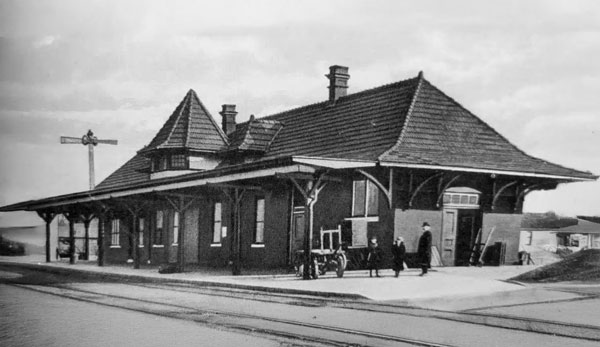 Work on the third and present depot was completed in October 1914, in a red-brick Victorian style with a ceramic tile-covered hipped roof. The structure partially incorporated the walls of the burned depot, which measured about 20 feet by 77 feet, and had four new rooms; an office, a ladies’ waiting room, men’s waiting room and a baggage and express room. The “new” structure is about 32 feet longer than the earlier one permitting a modified room arrangement and included the addition of an umbrella shed on the front and east side, the installation of electric lights, and an attractive tile roof.
Work on the third and present depot was completed in October 1914, in a red-brick Victorian style with a ceramic tile-covered hipped roof. The structure partially incorporated the walls of the burned depot, which measured about 20 feet by 77 feet, and had four new rooms; an office, a ladies’ waiting room, men’s waiting room and a baggage and express room. The “new” structure is about 32 feet longer than the earlier one permitting a modified room arrangement and included the addition of an umbrella shed on the front and east side, the installation of electric lights, and an attractive tile roof.
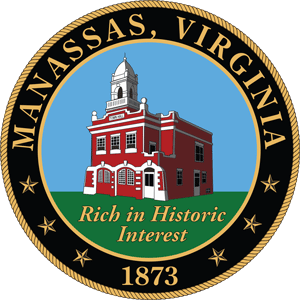 In the 1990s, the city of Manassas acquired the depot from Norfolk Southern Railway and restored the structure under the direction of The Manassas Museum System. Renovation was completed in 1997 after two and a half years of work by the city of Manassas Department of Historic Resources. The redesign was done by Dalgleish, Eichman, Gilpin, & Paxton; construction by Mass Contracting; and exhibits by PRD Group, Ltd.
In the 1990s, the city of Manassas acquired the depot from Norfolk Southern Railway and restored the structure under the direction of The Manassas Museum System. Renovation was completed in 1997 after two and a half years of work by the city of Manassas Department of Historic Resources. The redesign was done by Dalgleish, Eichman, Gilpin, & Paxton; construction by Mass Contracting; and exhibits by PRD Group, Ltd.
Rehabilitation included returning the building as closely as possible to its 1914 look while accommodating modern uses. Restored features include paint colors, repointed brick, new plaster, overhaul of all mechanical systems, addition of fire and security systems, wood moldings, reproductions of original doors and light fixtures and return of the distinctive clay tile roof, made by the same company that did the 1914 roof.
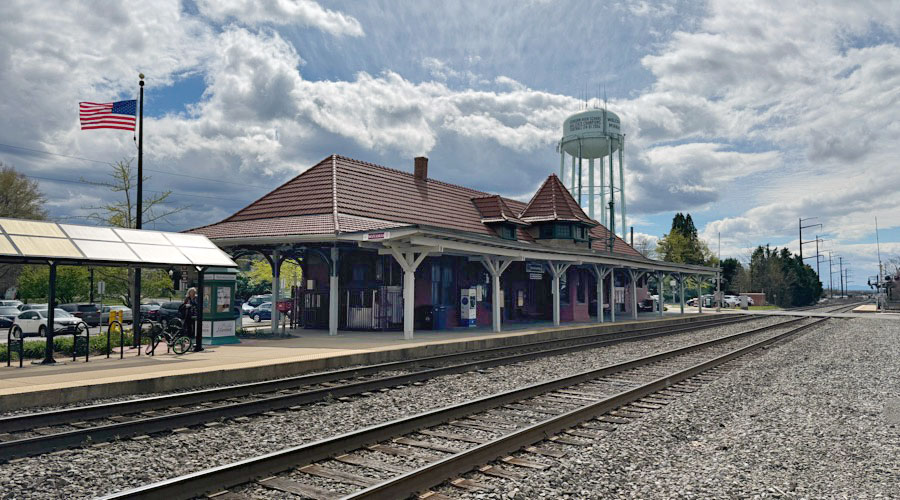
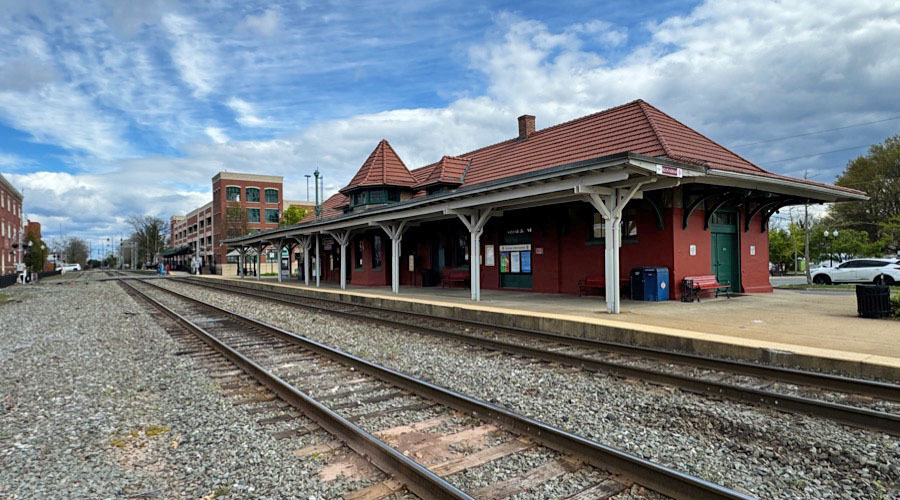
Manassas, Va / Apr 2024 / RWH

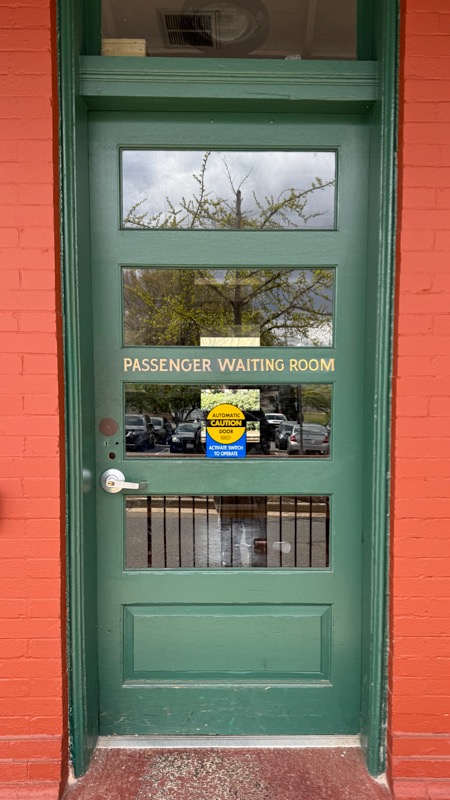
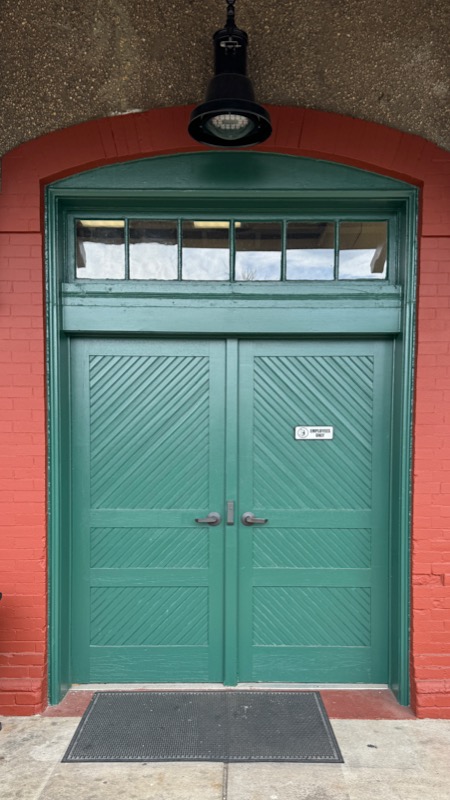
Apr 2024 / RWH
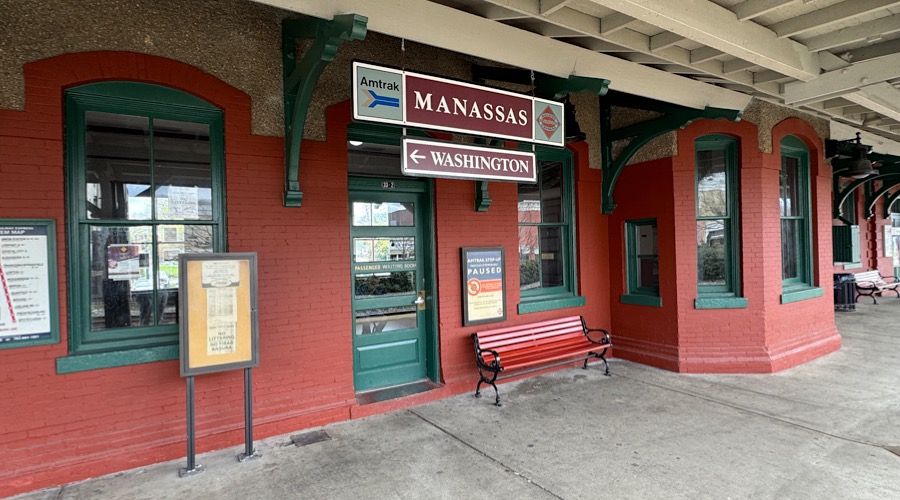
Apr 2024 / RWH
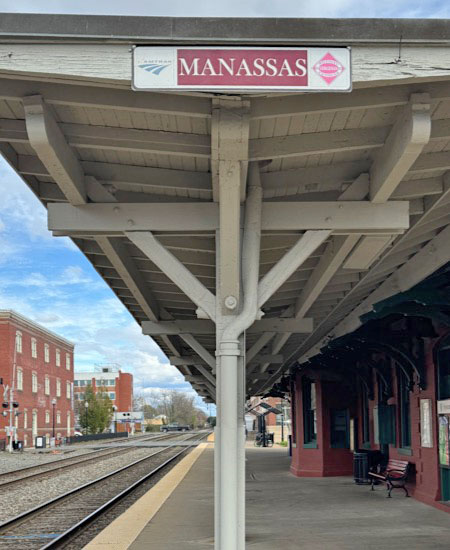
Apr 2024 / RWH
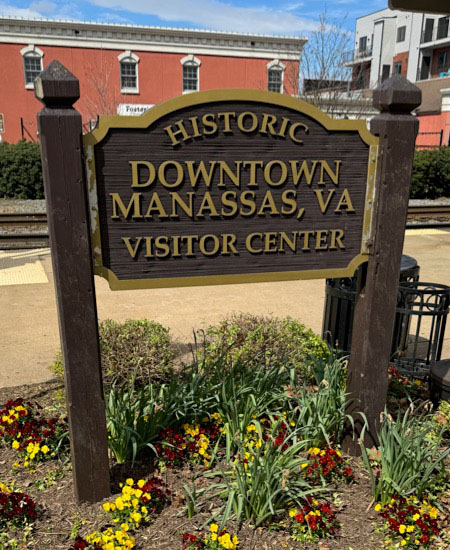
Apr 2024 / RWH

Apr 2024 / RWH


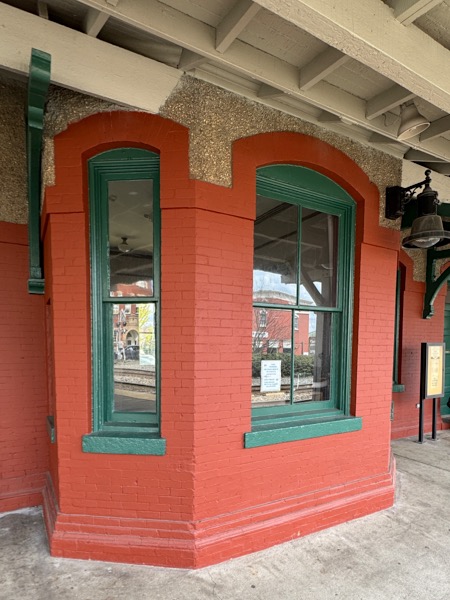
Apr 2024 / RWH
 Manassas, VA
Manassas, VA
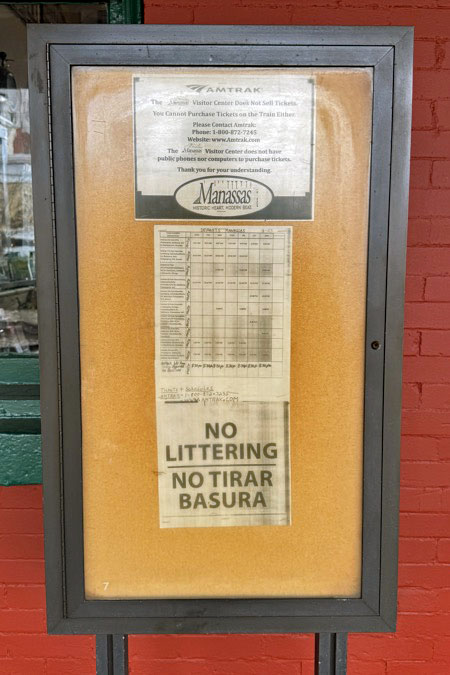
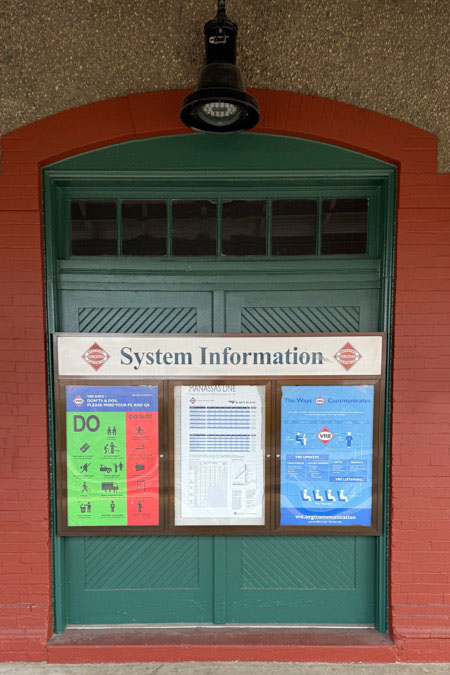
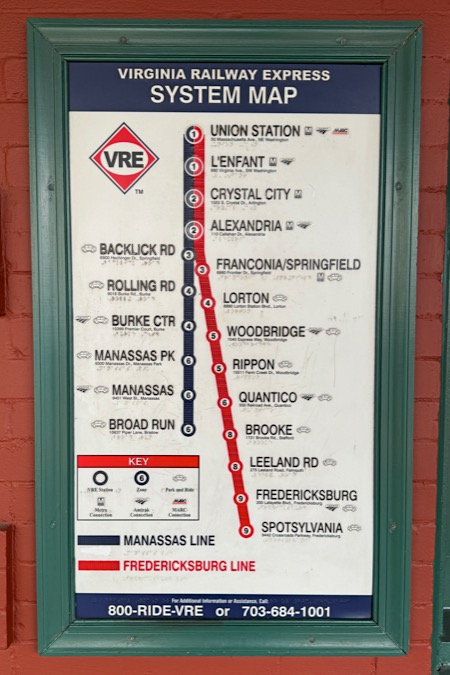
Apr 2024 / RWH
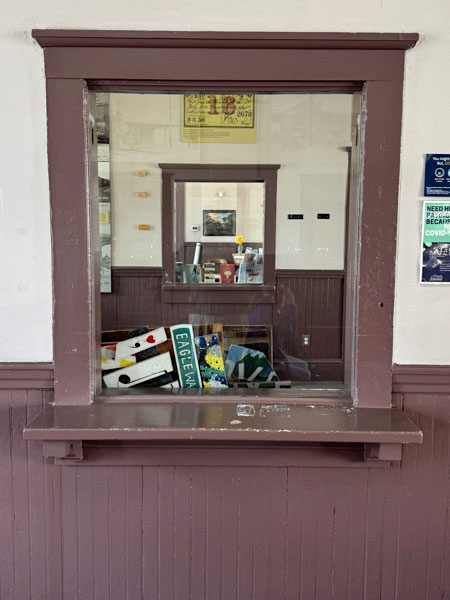
Apr 2024 / RWH
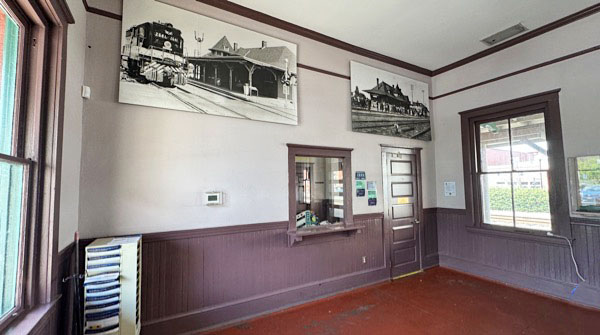
Apr 2024 / RWH
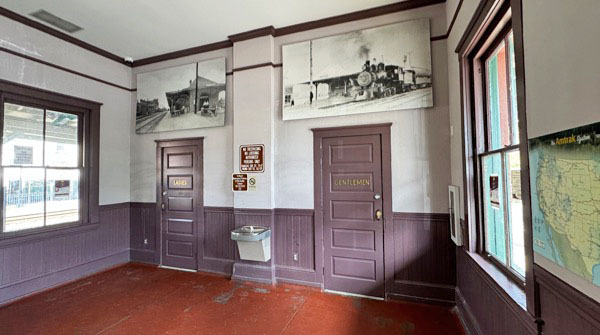
Apr 2024 / RWH
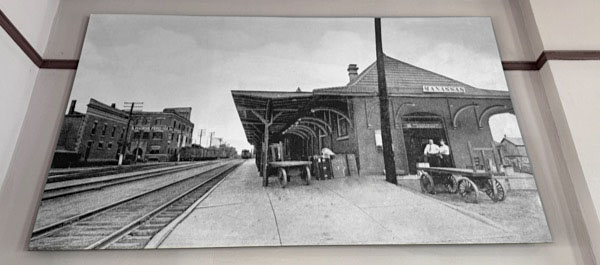
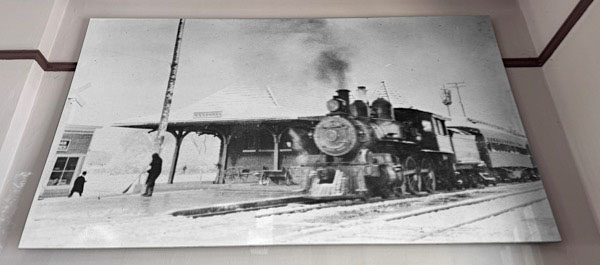
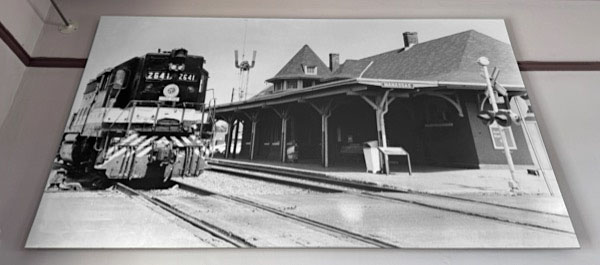
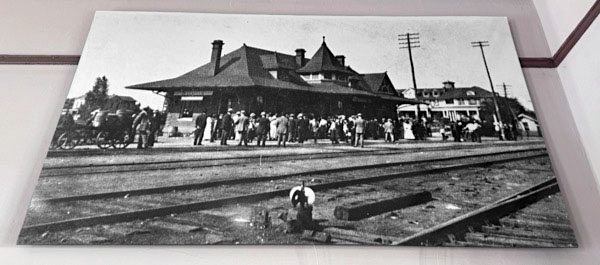
Apr 2024 / RWH
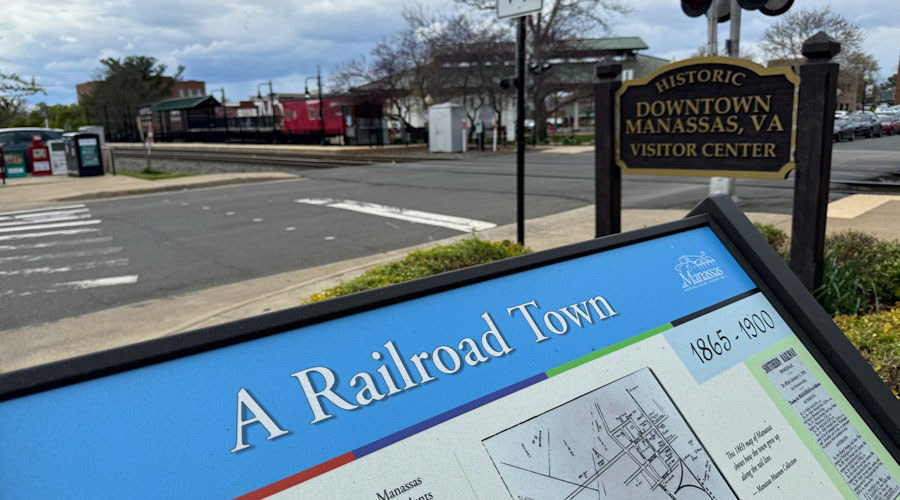
Manassas, Va / Apr 2024 / RWH
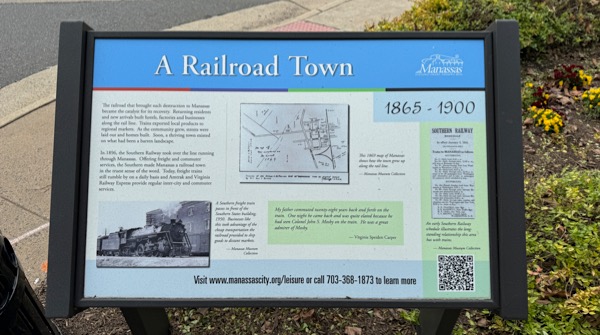
Apr 2024 / RWH
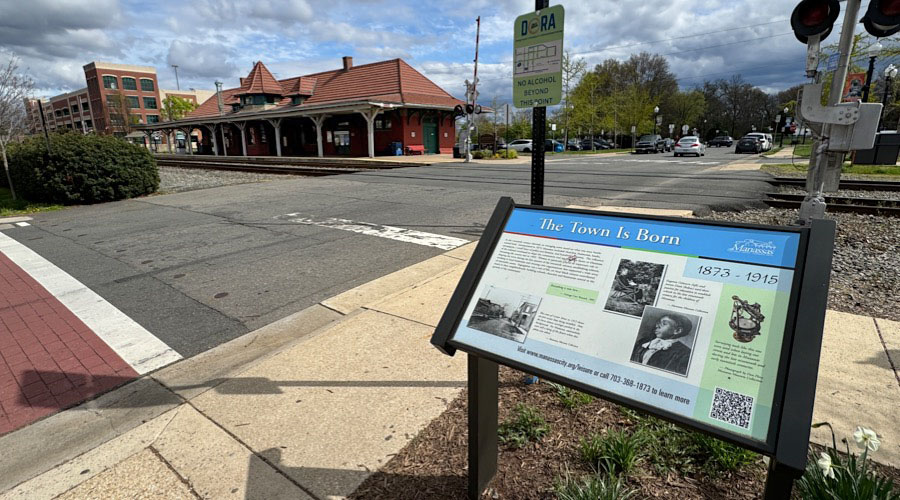
Manassas, Va / Apr 2024 / RWH

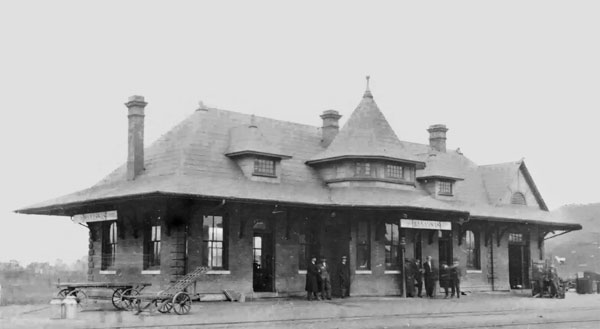
 ver the years, the Manassas Train Station witnessed many changes in the city. It was a bustling hub of activity during the 1920s and 1930s, as travelers came and went from Manassas. As the years went on, the Manassas Train Station continued to be an important landmark in the city. It survived the decline of rail travel in the mid-20th century, and today it stands as a proof to the city's rich history.
ver the years, the Manassas Train Station witnessed many changes in the city. It was a bustling hub of activity during the 1920s and 1930s, as travelers came and went from Manassas. As the years went on, the Manassas Train Station continued to be an important landmark in the city. It survived the decline of rail travel in the mid-20th century, and today it stands as a proof to the city's rich history.
Visitors to the Train Station can still see the original features that were built over a century ago, including the distinctive red brick façade and the arched windows. The station has been restored and is now a Virginia Welcome Center and main office of Historic Manassas, Inc. It also hosts the Manassas Museum Store, offering a glimpse into the past and the role that rail travel played in our history.
The Manassas Train Station may be a silent witness to history, but it is also a living reminder of the city's past and its enduring spirit. As visitors step inside, they are transported back in time to an era when rail travel was the height of modernity and adventure. Today, the station represents the city's rich history and legacy.
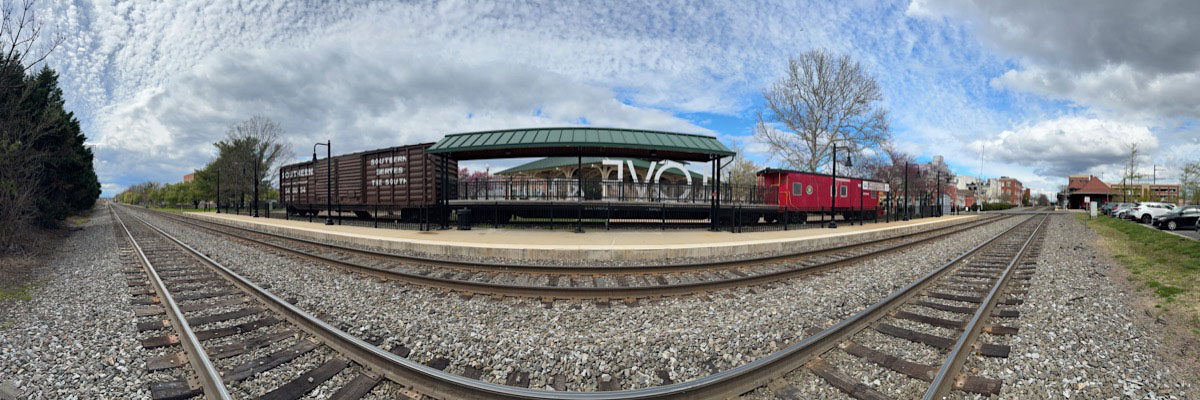
Manassas, Va / Apr 2024 / RWH
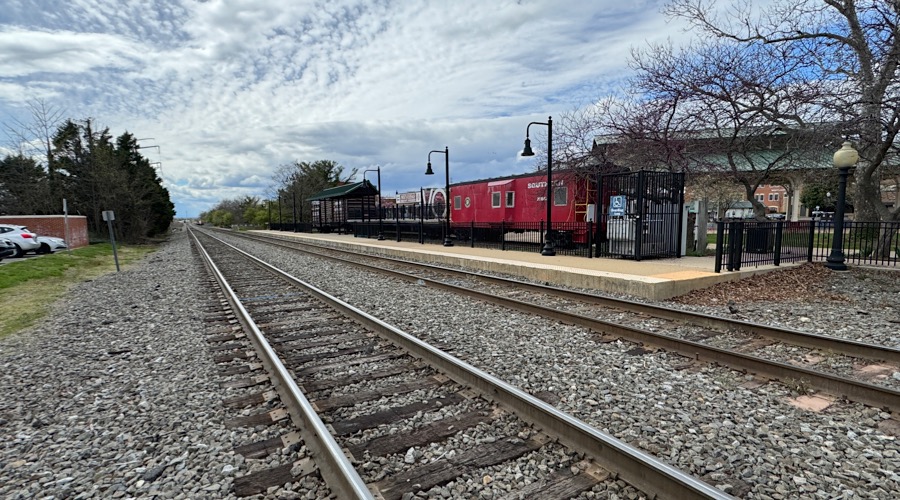
Manassas, Va / Apr 2024 / RWH
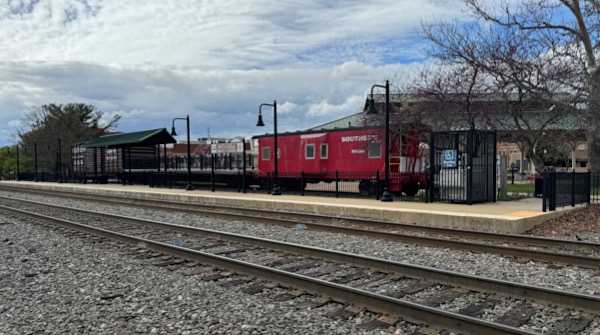
Manassas, Va / Apr 2024 / RWH
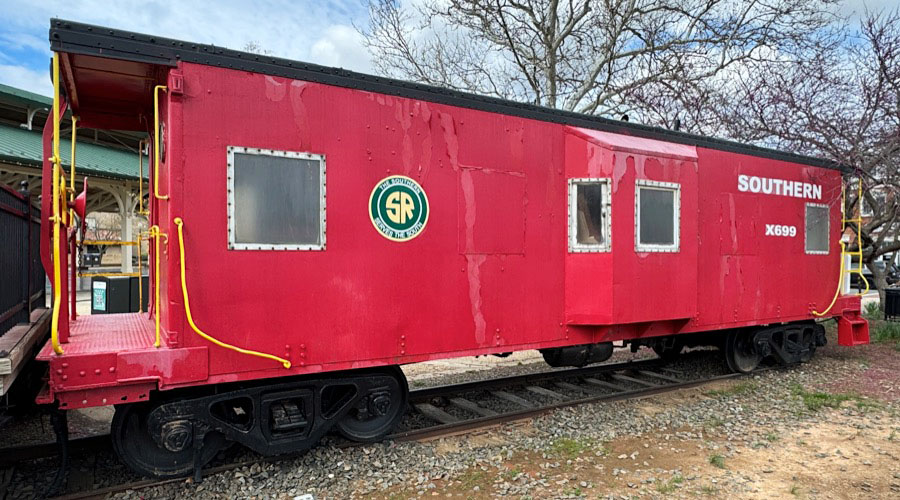
Southern Railway #X699
Manassas, Va / Apr 2024 / RWH
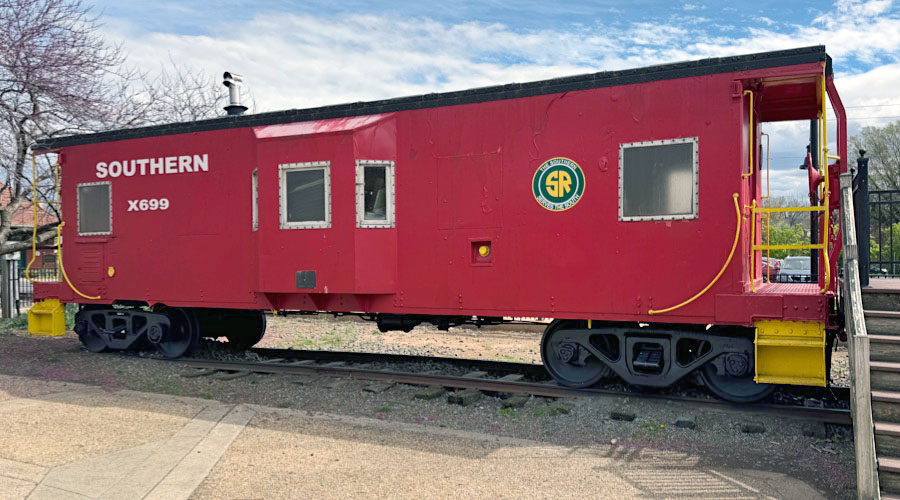
Manassas, Va / Apr 2024 / RWH
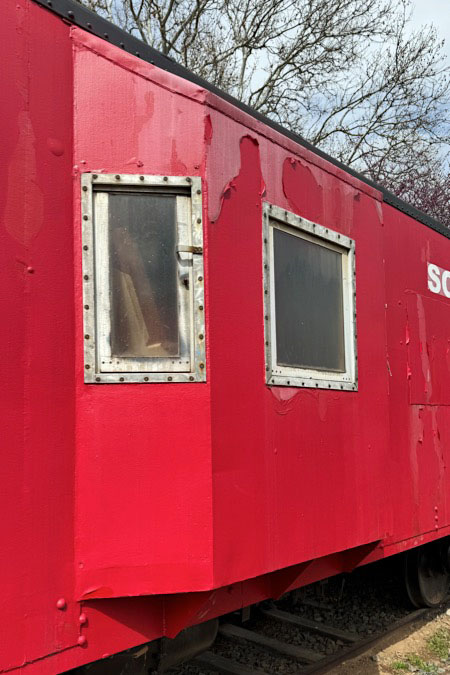
Apr 2024 / RWH

See also our complete Southern Railway Bay Window Survivors scrapbook in Mainlines
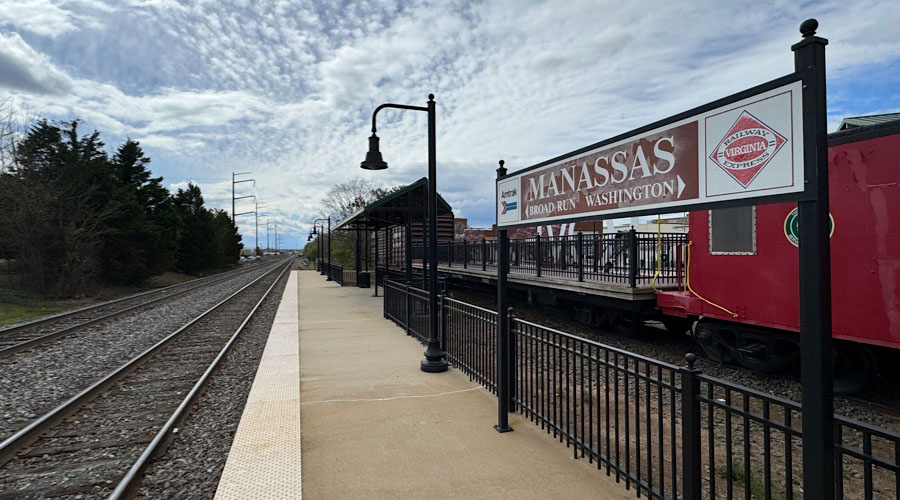
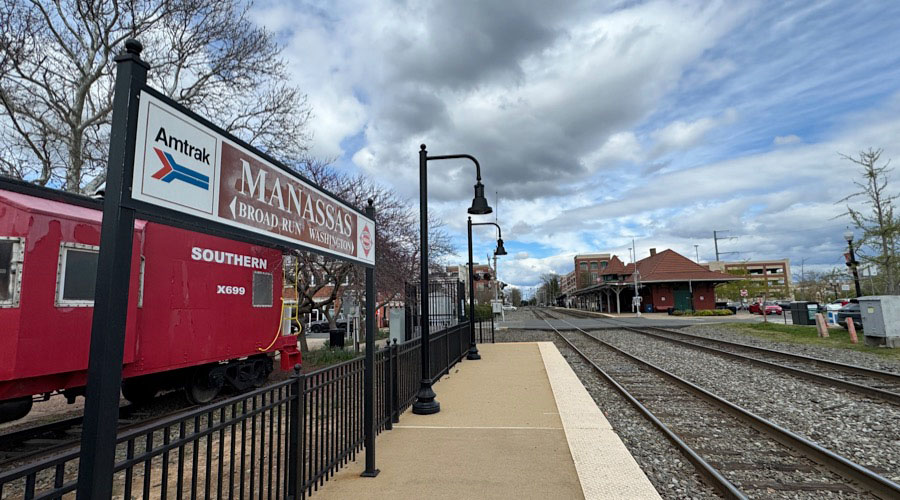
Manassas, Va / Apr 2024 / RWH
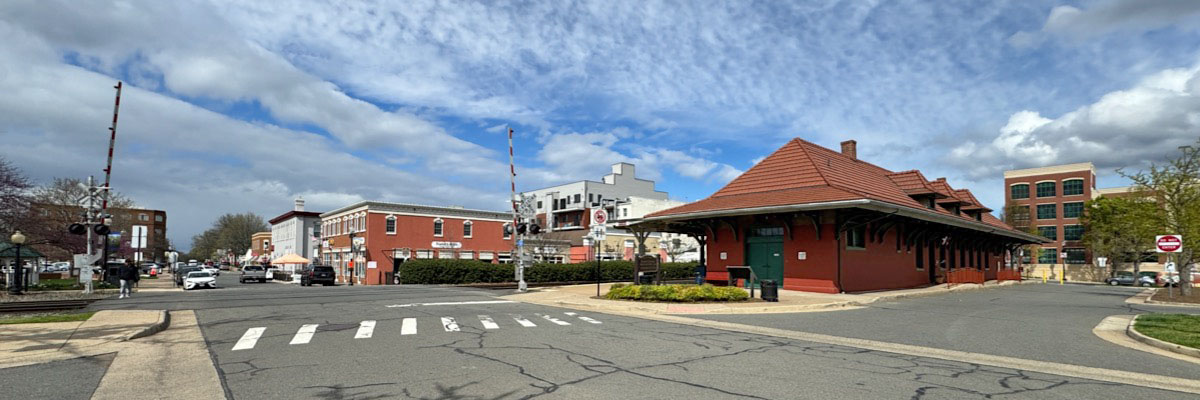
Manassas, Va / Apr 2024 / RWH
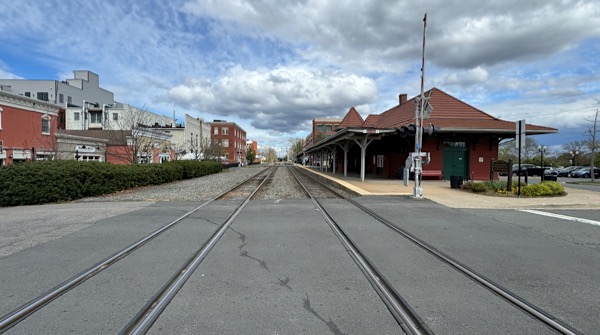
Manassas, Va / Apr 2024 / RWH
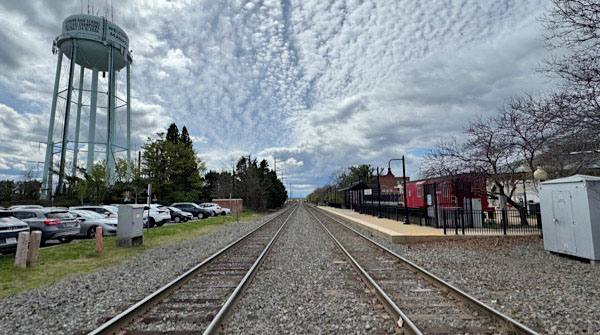
Manassas, Va / Apr 2024 / RWH
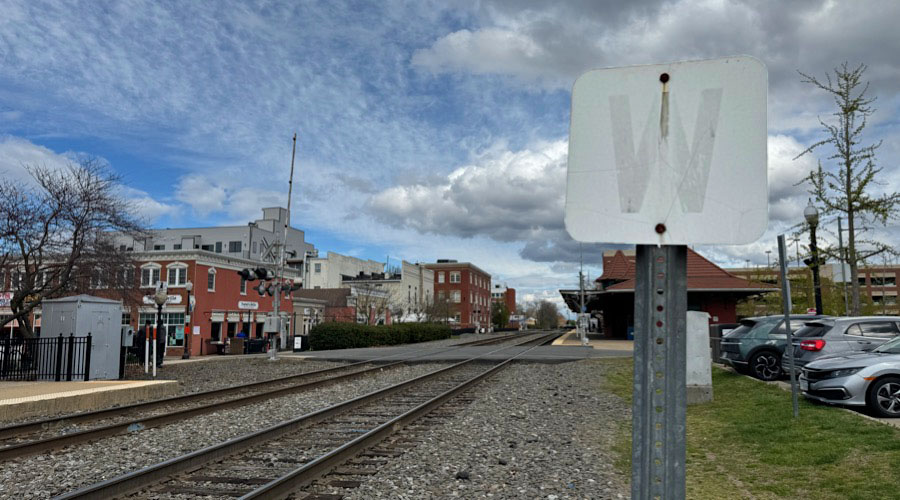
Manassas, Va / Apr 2024 / RWH
 Culpepper, Va
Culpepper, Va

Culpeper, Va / Apr 2024 / RWH
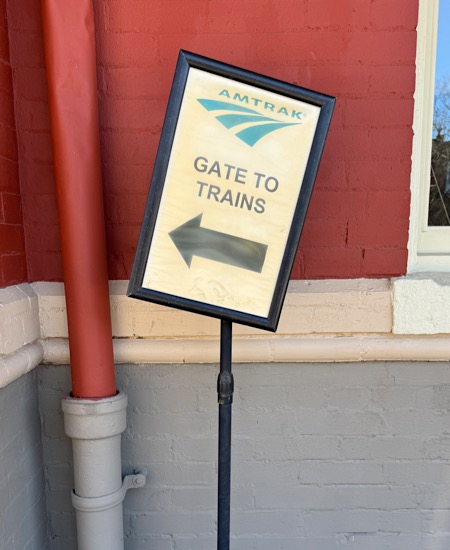
Apr 2024 / RWH
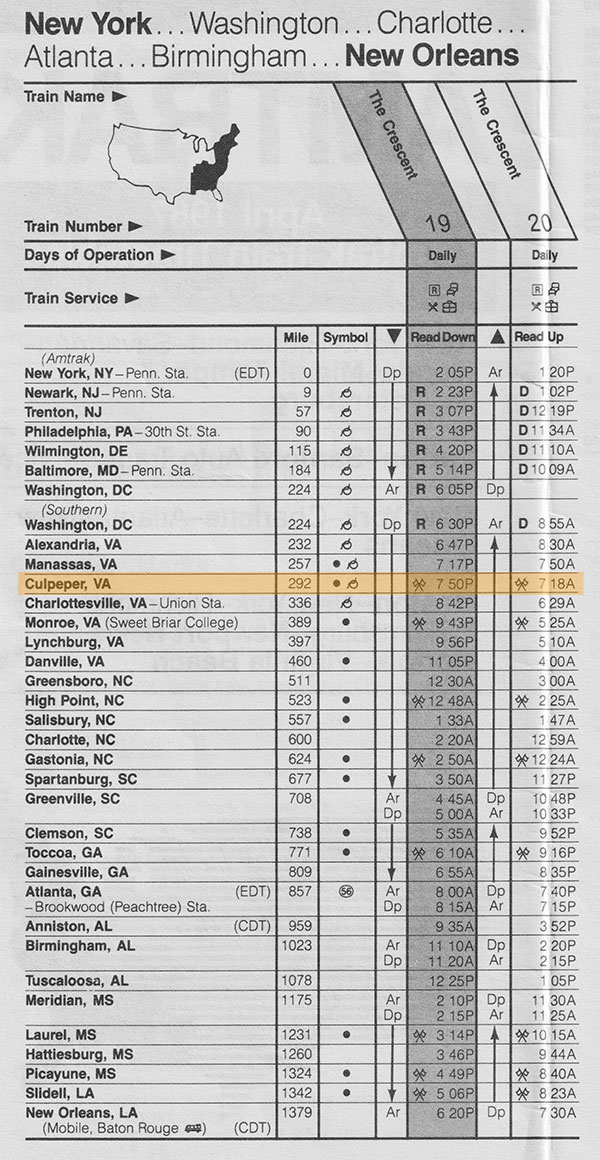
1987 Amtrak timetable / collection
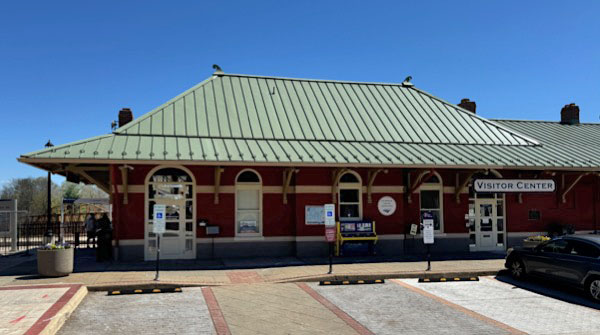
Culpeper, Va / Apr 2024 / RWH
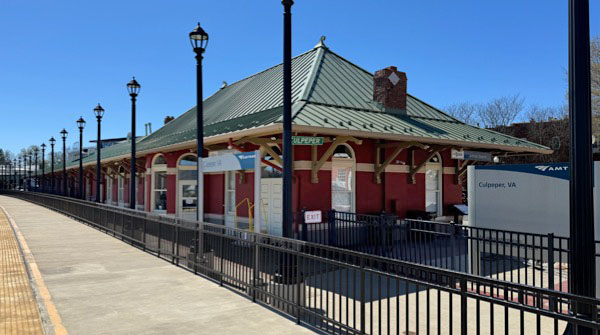
Culpeper, Va / Apr 2024 / RWH

Apr 2024 / RWH

Click to see the Culpeper station area plotted on a Google Maps page

Culpeper, Va / Apr 2024 / RWH

Culpeper, Va / Apr 2024 / RWH
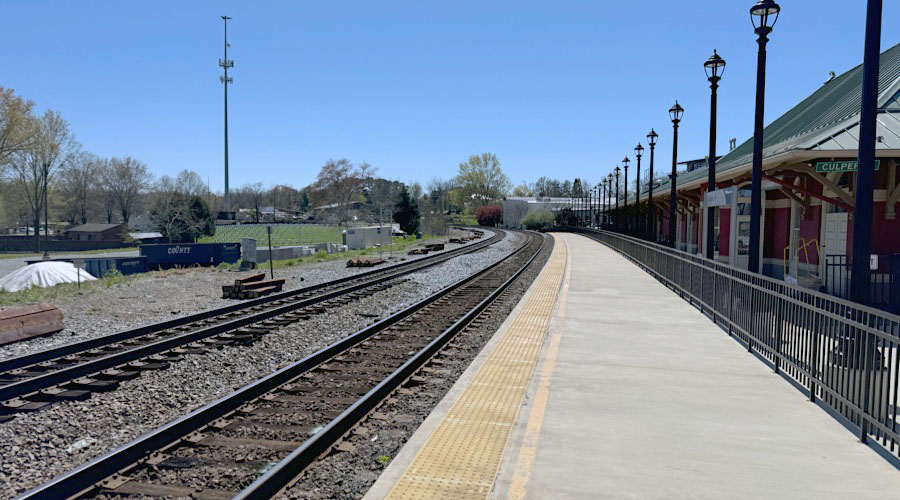
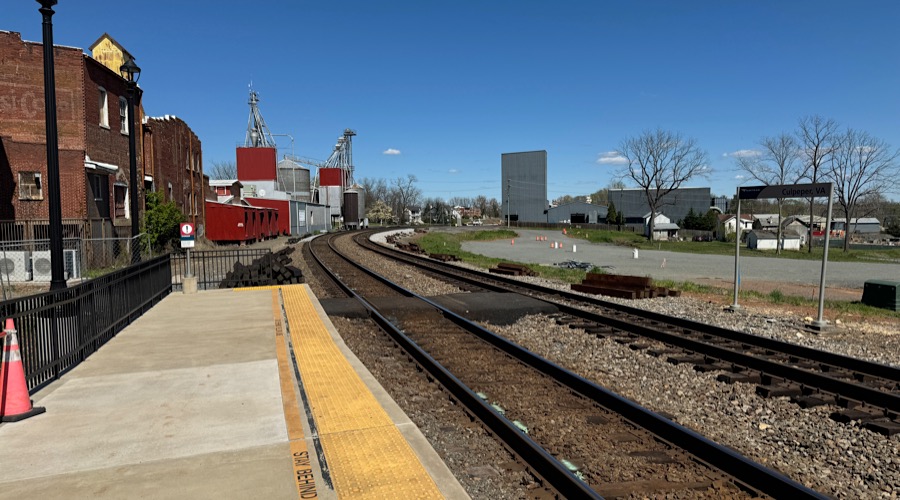
Culpeper, Va / Apr 2024 / RWH
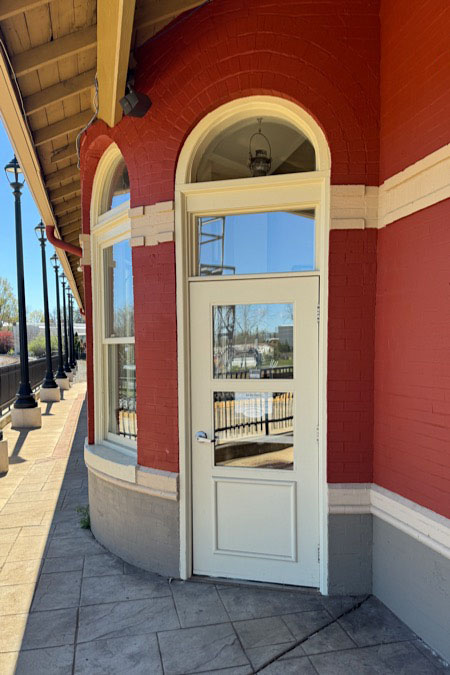
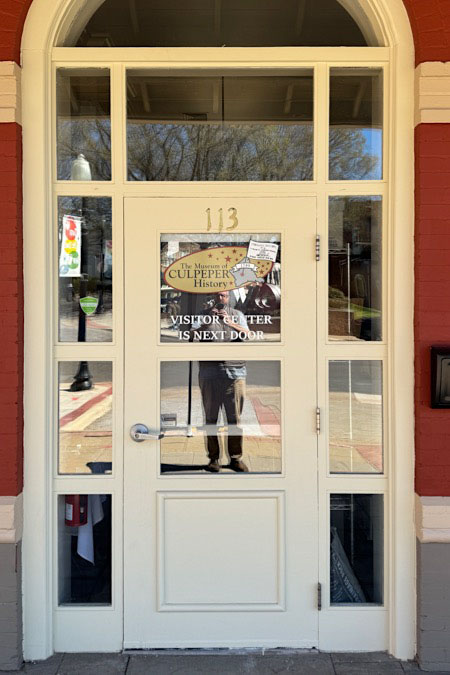
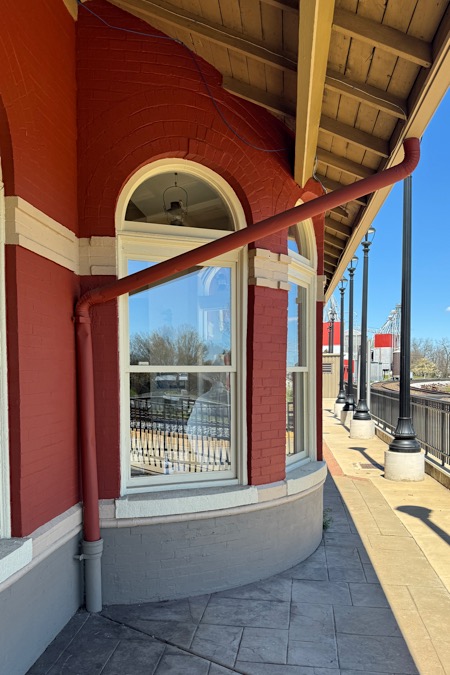
Apr 2024 / RWH

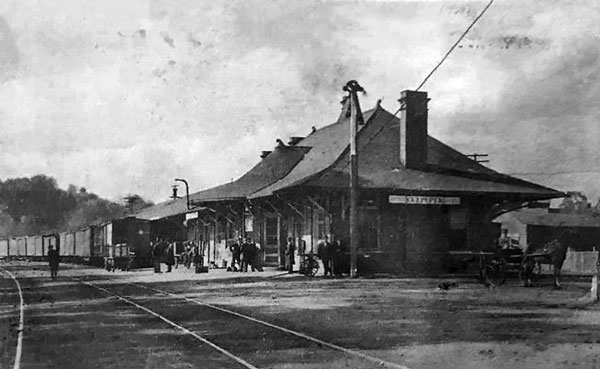
 he first Culpeper station was constructed in 1852 by the Orange and Alexandria Railroad. It built two depots, one on the east side for freight and one on the west side for passengers. Though the buildings survived the Civil War, the fighting took its toll, and in 1874, a new Culpeper train depot was erected. However, it burned down in 1903 and was replaced a year later with the current one story building.
he first Culpeper station was constructed in 1852 by the Orange and Alexandria Railroad. It built two depots, one on the east side for freight and one on the west side for passengers. Though the buildings survived the Civil War, the fighting took its toll, and in 1874, a new Culpeper train depot was erected. However, it burned down in 1903 and was replaced a year later with the current one story building.
A period of decline prompted Norfolk Southern Railway (NS) to request permission to demolish a portion of the depot in 1985. A citizens’ committee formed to save the building; subsequently, the Town of Culpeper and Culpeper Renaissance, Inc. (CRI), a certified Virginia Main Street organization, began restoration work. In 1995, CRI and the town successfully prepared a $700,000 renovation grant under the Virginia Department of Transportation Enhancement Program.
Three years later, NS officially transferred the building deed to the town, and in 2000 the renovated depot opened to the public. Additional work to the freight section was completed in 2003. Today, the station is occupied by the Culpeper Visitors Center, chamber of commerce, Culpeper Department of Tourism and the Museum of Culpeper History. The former freight section serves as conference space that can be rented for meetings and social events. The depot is truly a downtown anchor, playing host to a wide array of outdoor events, such as a vibrant weekly Farmers’ Market held from May through November.
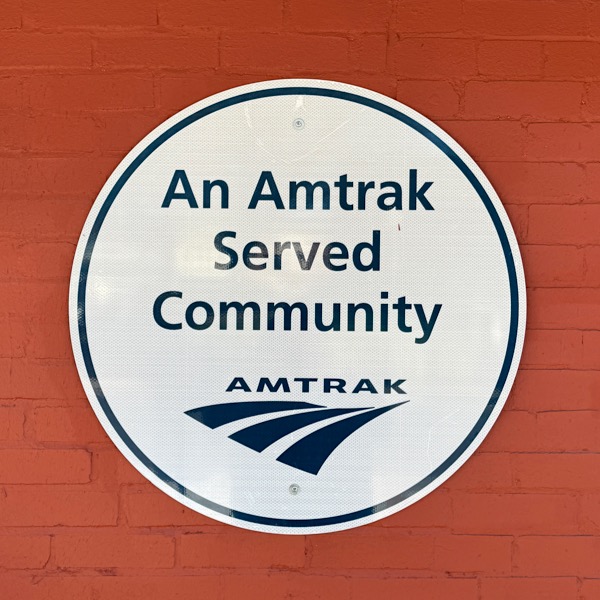
Apr 2024 / RWH
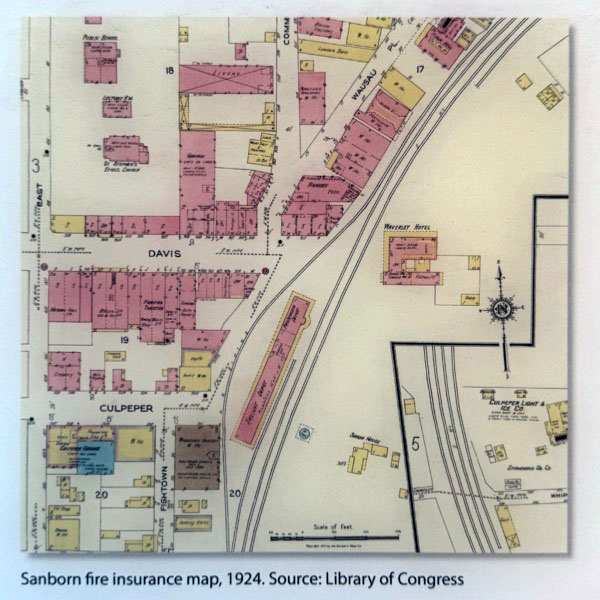
Apr 2024 / RWH
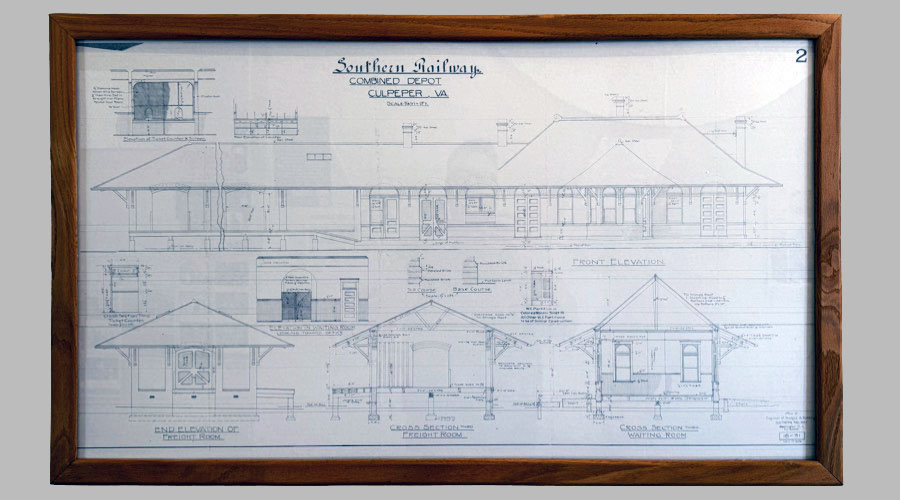
Apr 2024 / RWH
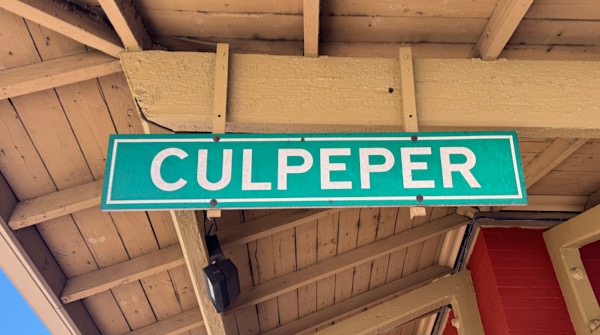
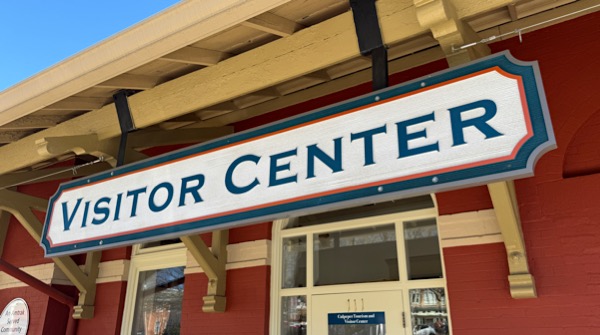
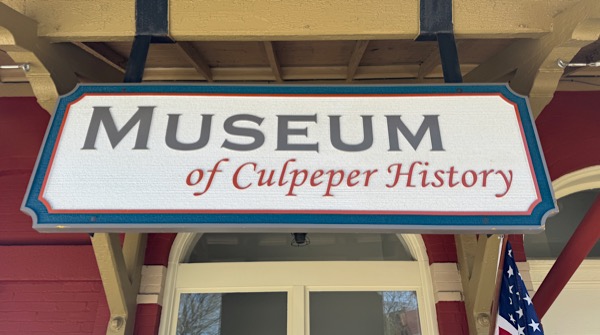
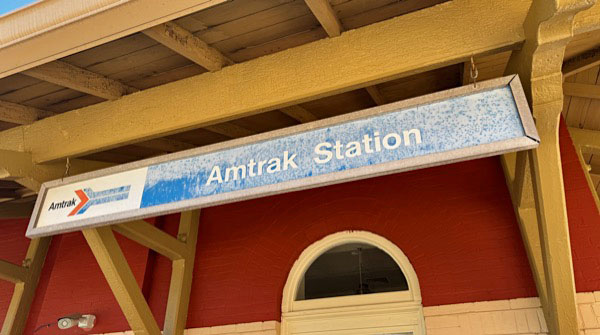
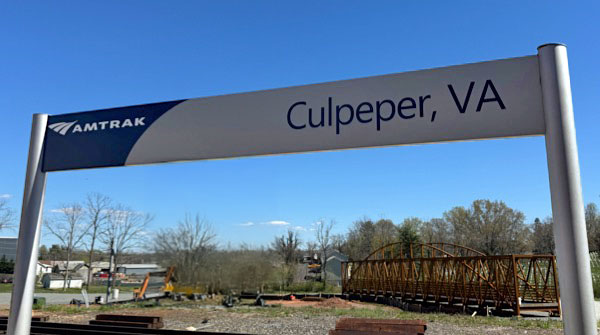
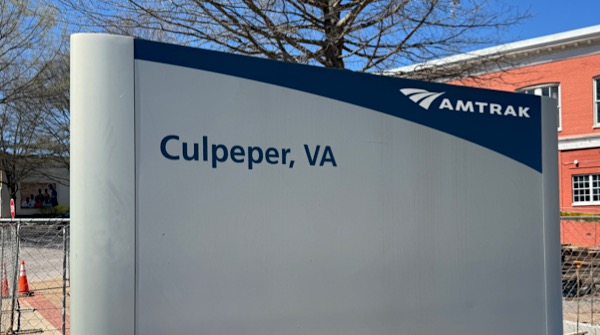
Apr 2024 / RWH
 Culpeper, VA
Culpeper, VA
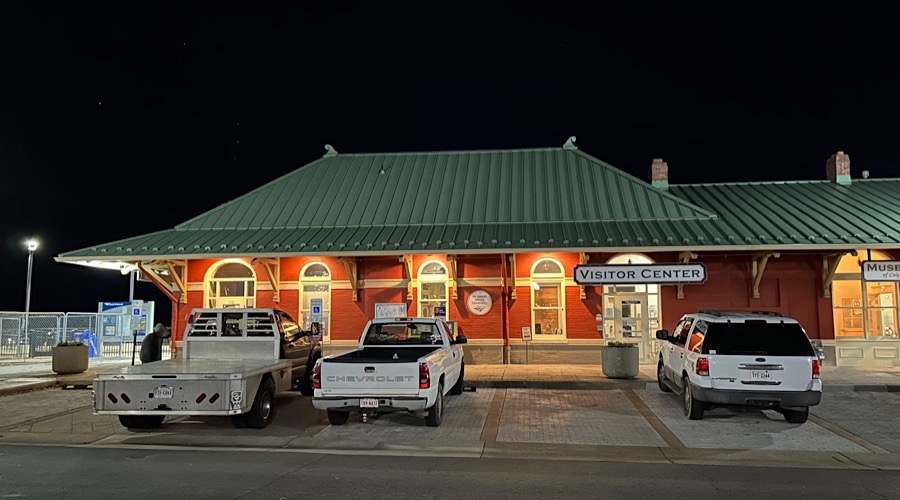
Culpeper, Va / Dec 2023 / ETH
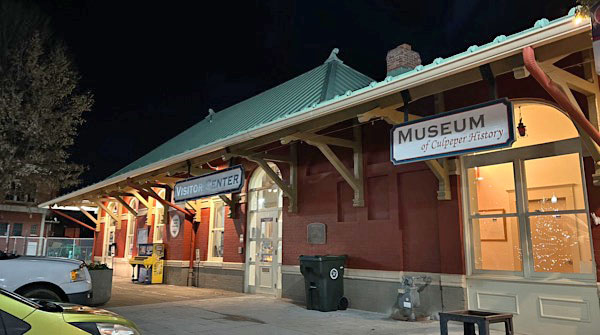
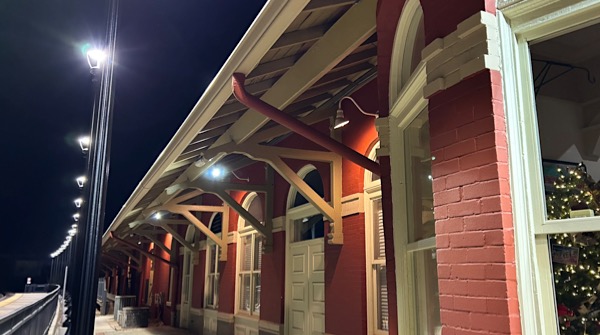
Culpeper, Va / Dec 2023 / ETH

Culpeper, Va / Dec 2023 / ETH
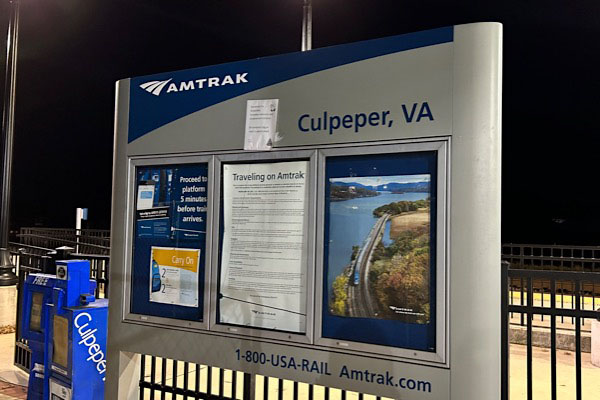
Dec 2023 / ETH
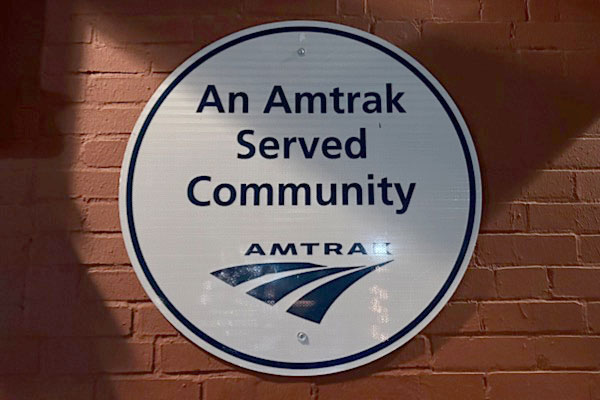
Dec 2023 / ETH
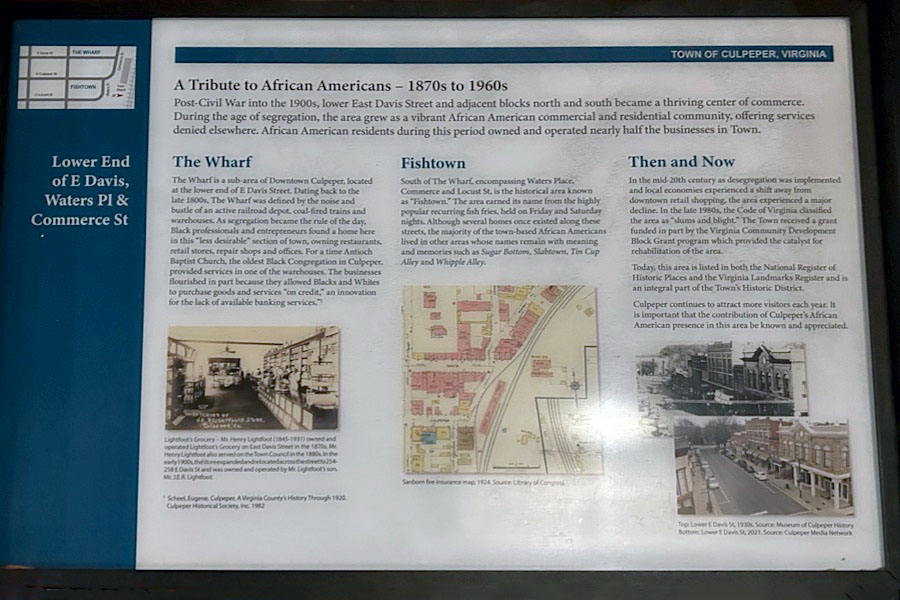
Dec 2023 / ETH
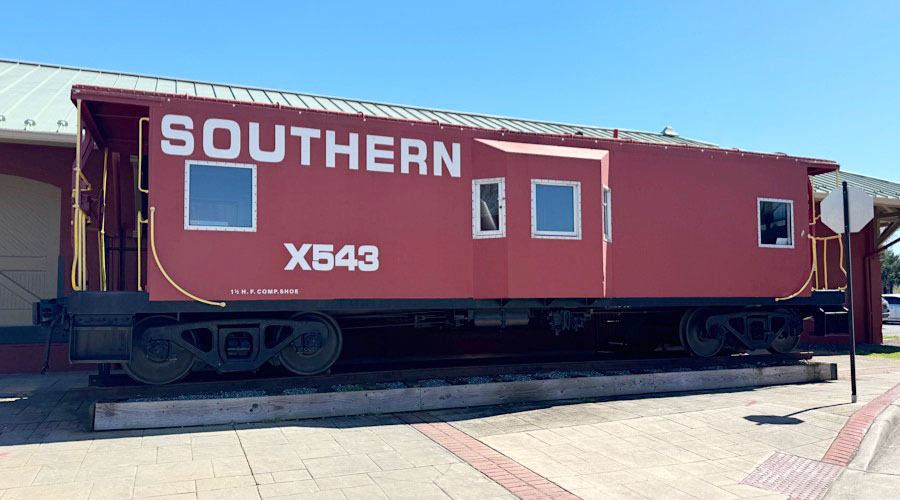
Southern Railway #X543
Culpeper, Va / Apr 2024 / RWH
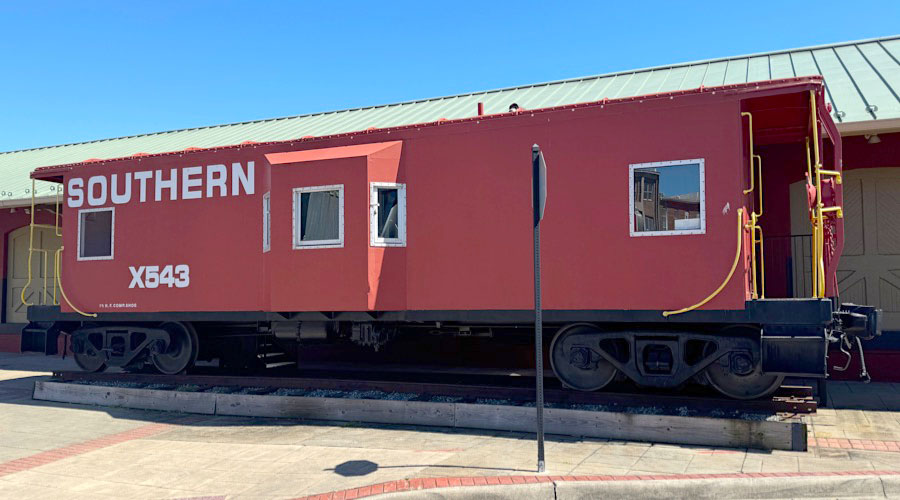
Culpeper, Va / Apr 2024 / RWH
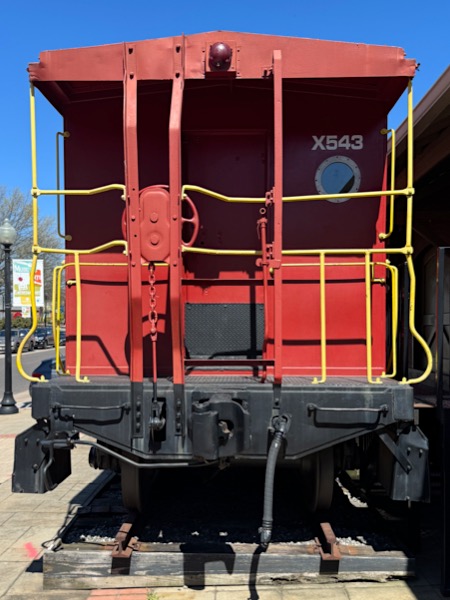
Apr 2024 / RWH
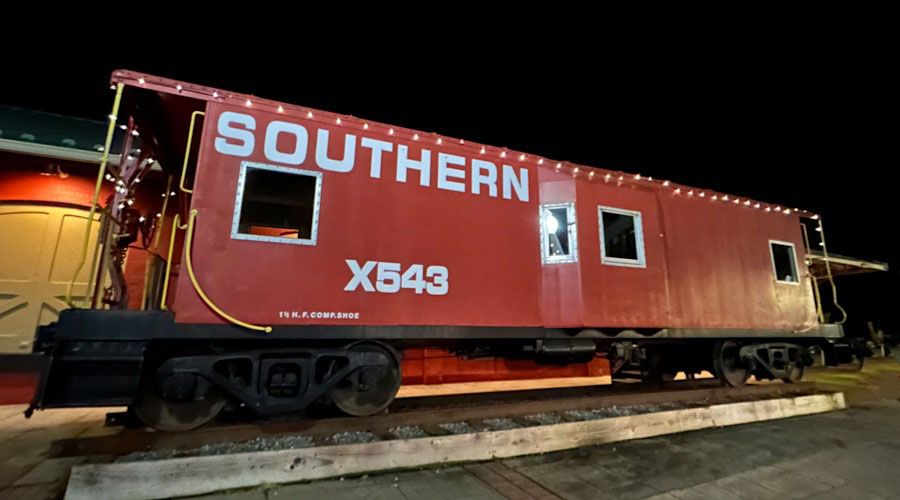
Culpeper, Va / Dec 2023 / ETH
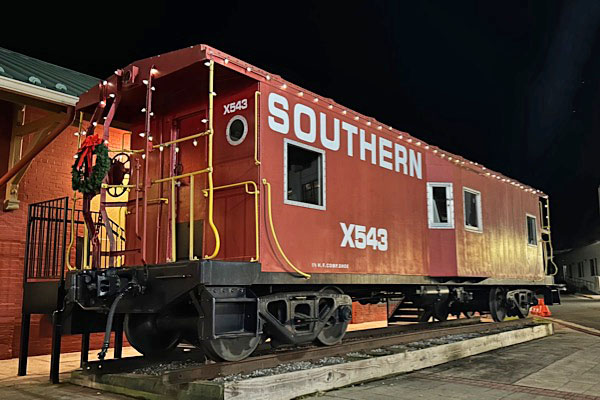
Culpeper, Va / Dec 2023 / ETH
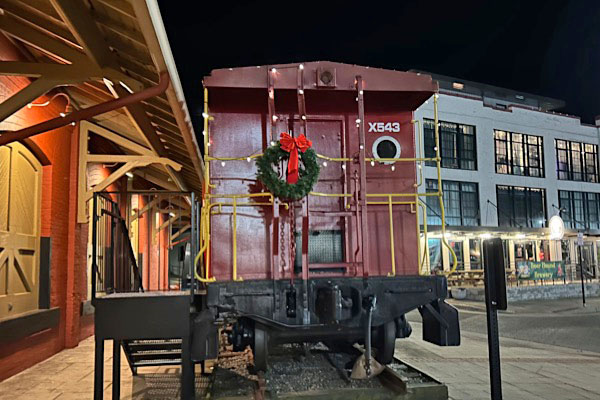
Dec 2023 / ETH

See also our complete Southern Railway Bay Window Survivors scrapbook in Mainlines
 Charlottesville, Va
Charlottesville, Va
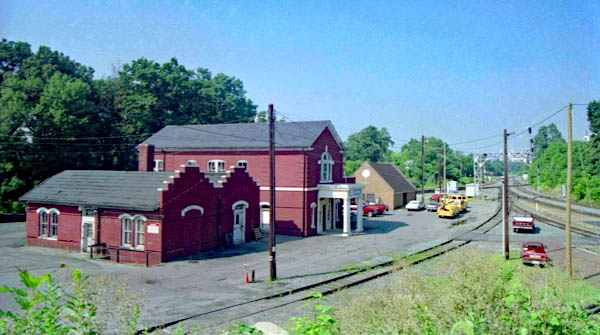
Charlottesville, Va / Aug 1989 / JCH

Charlottesville, Va / Aug 1989 / JCH
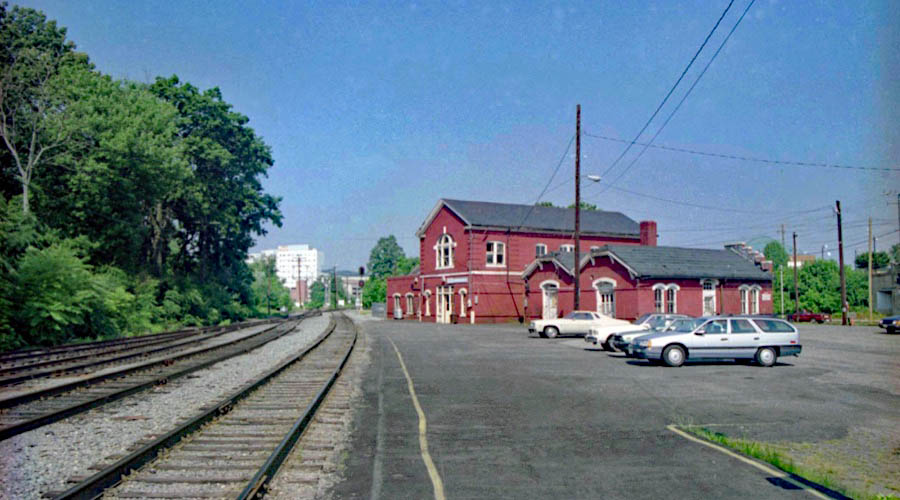
Charlottesville, Va / Aug 1989 / JCH

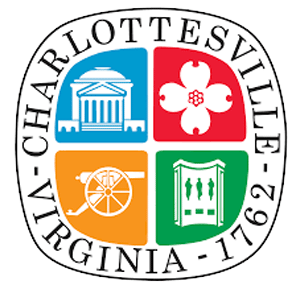
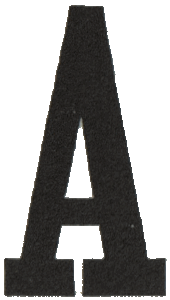 Monacan village, Monasukapanough, was the first human settlement on these lands. What started as a Monacan hunting path grew into Three Notch'd Road, a trade route used by European settlers to shuttle goods between Richmond and the Appalachian Mountains. Today we call this Monacan hunting path U.S. Route 250. Without it, Charlottesville would not have become what it is today.
Monacan village, Monasukapanough, was the first human settlement on these lands. What started as a Monacan hunting path grew into Three Notch'd Road, a trade route used by European settlers to shuttle goods between Richmond and the Appalachian Mountains. Today we call this Monacan hunting path U.S. Route 250. Without it, Charlottesville would not have become what it is today.
One of the first men to build upon this early infrastructure was Thomas Jefferson. Jefferson is undeniably the most famous figure in local history. He founded the University of Virginia down the mountain from Monticello, his mountaintop plantation. He inherited this mountaintop land, some 5,000 acres, from his father at the age of 26. He then used the labor of enslaved Africans to cultivate tobacco and construct the plantation house. Albemarle County was home to James Monroe too. Monroe, like Jefferson, also went on to become a U.S. president. James Madison lived just 26 miles northeast of Charlottesville, so we like to claim him too. Jefferson and Monroe, however, were practically next-door neighbors.
In 1850, Charlottesville welcomed its first railroad service, a technology that would later dramatically expand shipping through the area and bring more growth. Then, like any community in the South, the area lost many of its sons and brothers to the Civil War. Unlike many communities, however, the town itself was left largely unscathed--despite its central role in the manufacturing of Confederate uniforms. By 1887, the city had received its first horse drawn streetcars and kept an extra horse on hand to help cars climbing Vinegar Hill, a rough stretch of Main Street. In 1888, Charlottesville incorporated and annexed surrounding land to create a city of nearly 800 acres.

Charlottesville, Va / Nov 2016 / RWH

Charlottesville, Va / Nov 2016 / RWH

Click to see the Charlottesville station area plotted on a Google Maps page
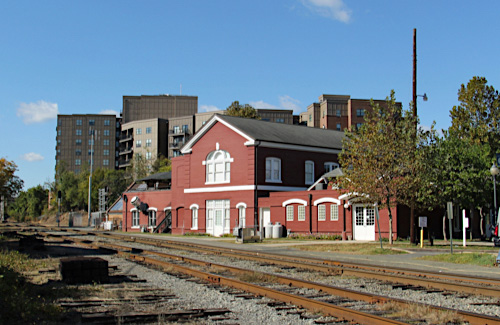
Charlottesville, Va / Nov 2016 / RWH

Charlottesville, Va / Nov 2016 / RWH

1987 Amtrak timetable / collection

Charlottesville, Va / Nov 2016 / RWH
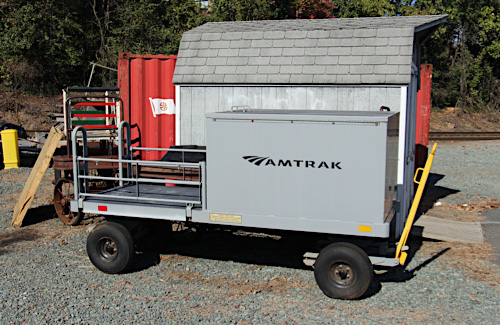
Charlottesville, Va / Nov 2016 / RWH
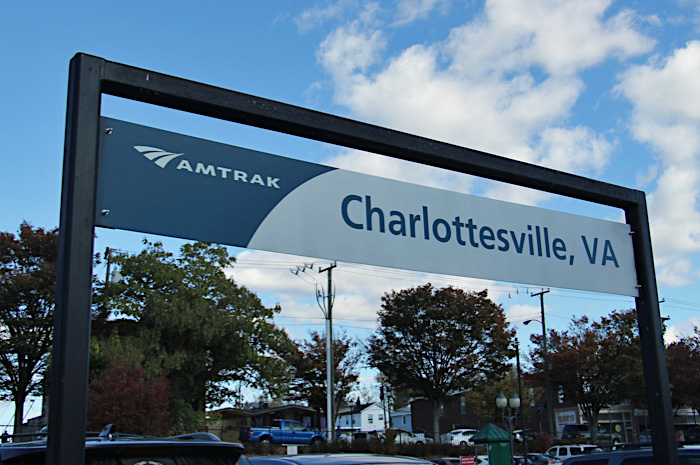
Charlottesville, Va / Nov 2016 / RWH
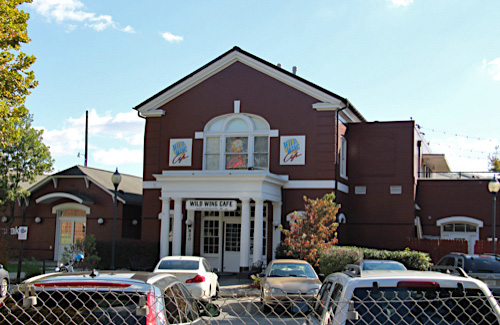
Charlottesville, Va / Nov 2016 / RWH

Charlottesville, Va / Nov 2016 / RWH

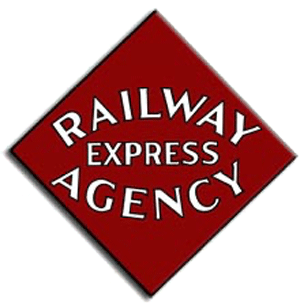
 harlottesville’s Union Station was constructed in 1885 and sits between the University of Virginia and downtown Charlottesville. In 1999, Amtrak and the city of Charlottesville dedicated the newly renovated depot following a $700,000 effort. Amtrak moved out of the original station and into the former Railway Express Agency building built in the 1890s. The new facility has a more modern waiting area, ticket counter and restroom, as well as better parking lot access and the addition of a full-service restaurant. One of the unique features of this station is that its two trains serve the station on two separate tracks on either side of the station. The lines cross just south of the building.
harlottesville’s Union Station was constructed in 1885 and sits between the University of Virginia and downtown Charlottesville. In 1999, Amtrak and the city of Charlottesville dedicated the newly renovated depot following a $700,000 effort. Amtrak moved out of the original station and into the former Railway Express Agency building built in the 1890s. The new facility has a more modern waiting area, ticket counter and restroom, as well as better parking lot access and the addition of a full-service restaurant. One of the unique features of this station is that its two trains serve the station on two separate tracks on either side of the station. The lines cross just south of the building.
Prior to this station’s construction, Charlottesville was a major rail hub, served by many trains daily. The first train service to Charlottesville was operated by the Louisa Railroad Company, which later became the Central Virginia Railroad (later Chesapeake & Ohio, now CSX). In the mid 1880s, Virginia Midland Railroad (later Southern Railway, now Norfolk Southern) created a perpendicular north-south route. This produced competition between the two rail companies and strengthened the local economy. Hotels and restaurants went up along West Main Street for the many new railroad workers, including those at a railcar repair shop.

See also our Amtrak Cardinal scrapbook, which also calls at Charlottesville
 Charlottesville, VA
Charlottesville, VA
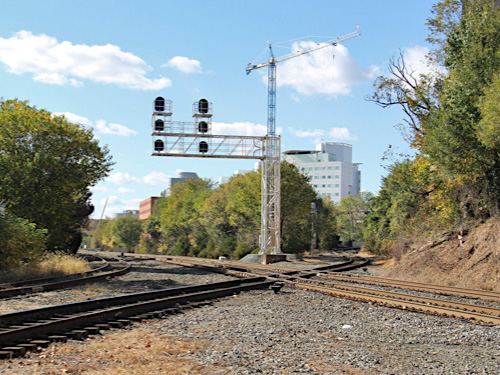
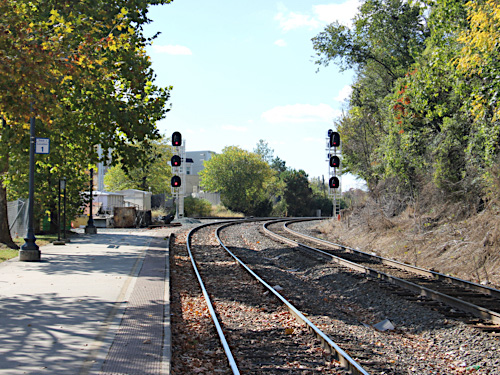
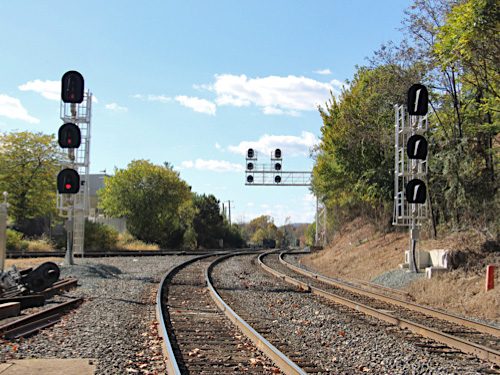
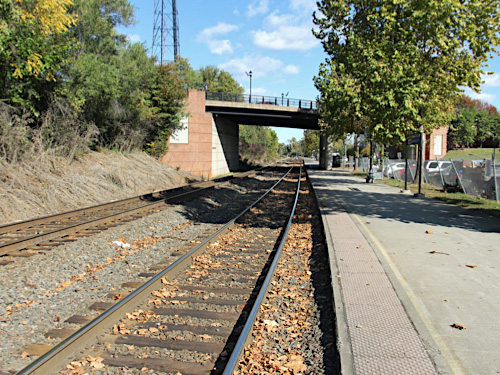
Charlottesville, Va / Nov 2016 / RWH
HawkinsRails thanks railfan friend Garland Harper for use of his Charlottesville and Lynchburg Crescent photos

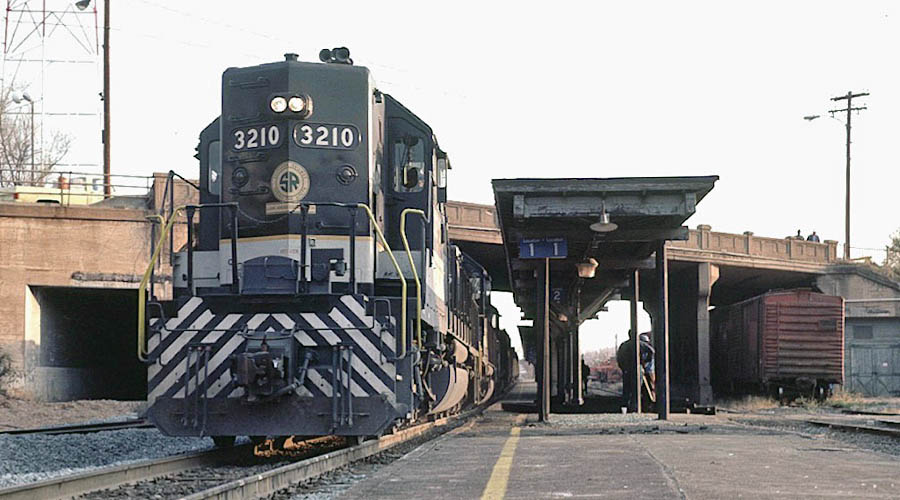
Charlottesville, Va / Nov 1980 / Garland Harper
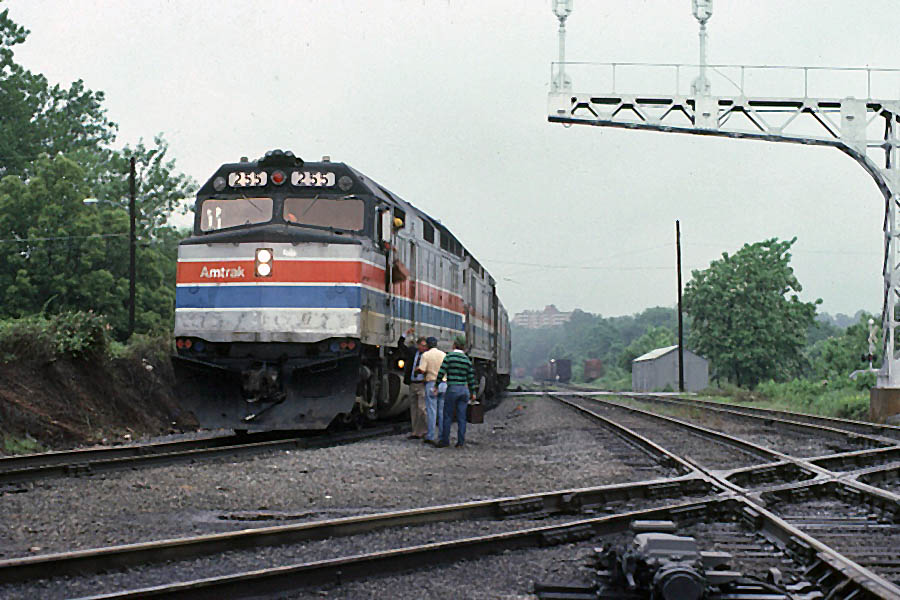
Charlottesville, Va / May 1982 / Garland Harper

Charlottesville, Va / Feb 1993 / Garland Harper
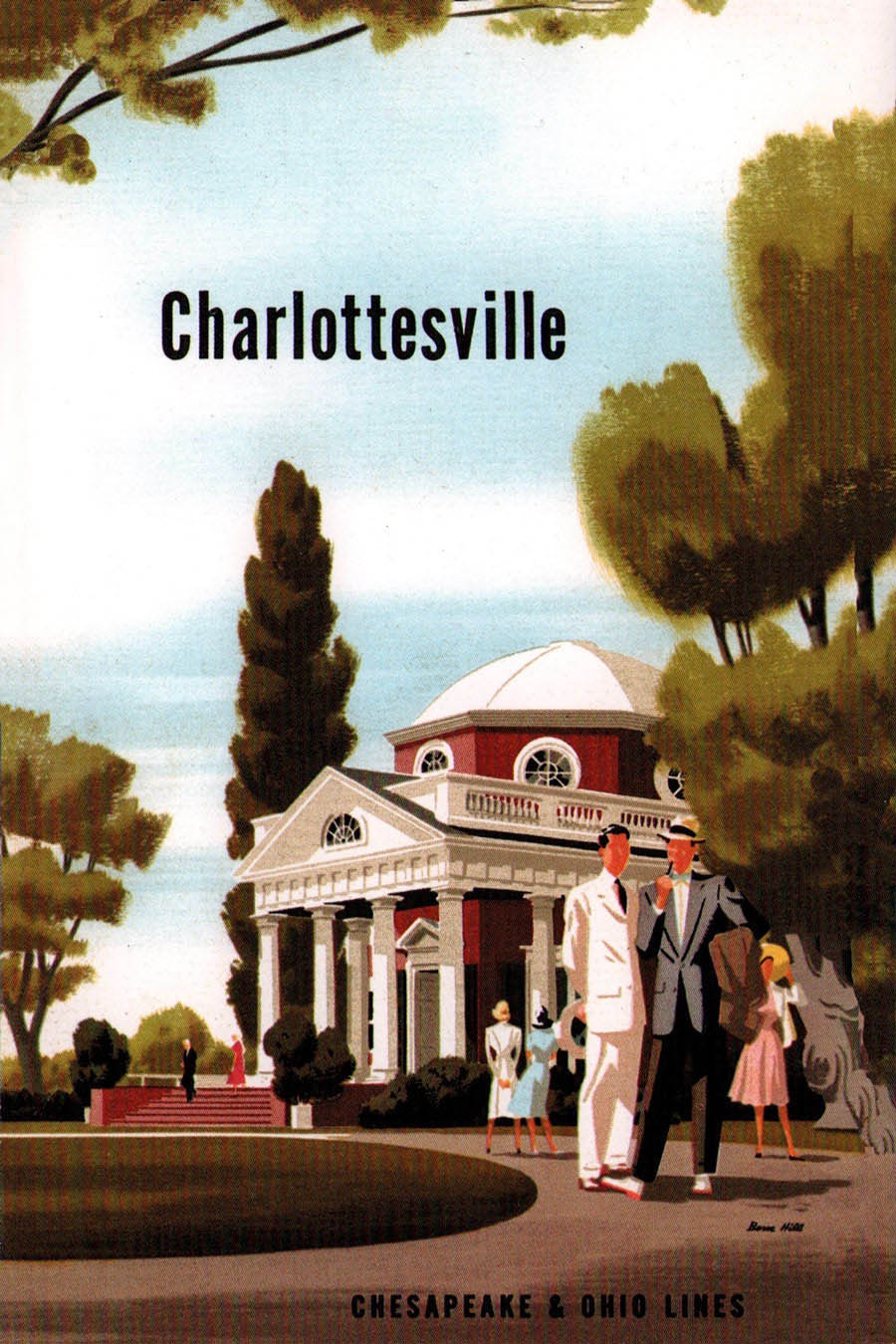
postcard / collection

postcard / collection
 Lynchburg, Va
Lynchburg, Va
 James River Bridge
James River Bridge
 The daily Crescents cross the James River in Lynchburg, Virginia, across a tall deck plate girder bridge built in 1911. This span and three others were built in the early 1900's as part of the Southern Railway's (now Norfolk Southern) "Lynchburg cut-off" project, which bypassed the original line of the railroad through downtown Lynchburg, with its tight curves and steep grades. The line opened for freight traffic on March 1, 1911, and passenger traffic followed on April 16, 1911. The span was built with double-track. The Southern single-tracked the trestle about 1962. This span has been the sight of several pedestrian fatalities over the years, the most recent being November 17, 2011.
In addition to this massive, iconic structure, (1860 ft. long and 150 ft. high) the other three trestles on the seven-mile-long cut-off are Harris Creek trestle, to the north of the James, and Blackwater Creek and Fishing Creek trestles to the south.
The daily Crescents cross the James River in Lynchburg, Virginia, across a tall deck plate girder bridge built in 1911. This span and three others were built in the early 1900's as part of the Southern Railway's (now Norfolk Southern) "Lynchburg cut-off" project, which bypassed the original line of the railroad through downtown Lynchburg, with its tight curves and steep grades. The line opened for freight traffic on March 1, 1911, and passenger traffic followed on April 16, 1911. The span was built with double-track. The Southern single-tracked the trestle about 1962. This span has been the sight of several pedestrian fatalities over the years, the most recent being November 17, 2011.
In addition to this massive, iconic structure, (1860 ft. long and 150 ft. high) the other three trestles on the seven-mile-long cut-off are Harris Creek trestle, to the north of the James, and Blackwater Creek and Fishing Creek trestles to the south.
Garland Harper

Lynchburg, Va / Nov 1990 / Garland Harper

Lynchburg, Va / Feb 2015 / Garland Harper
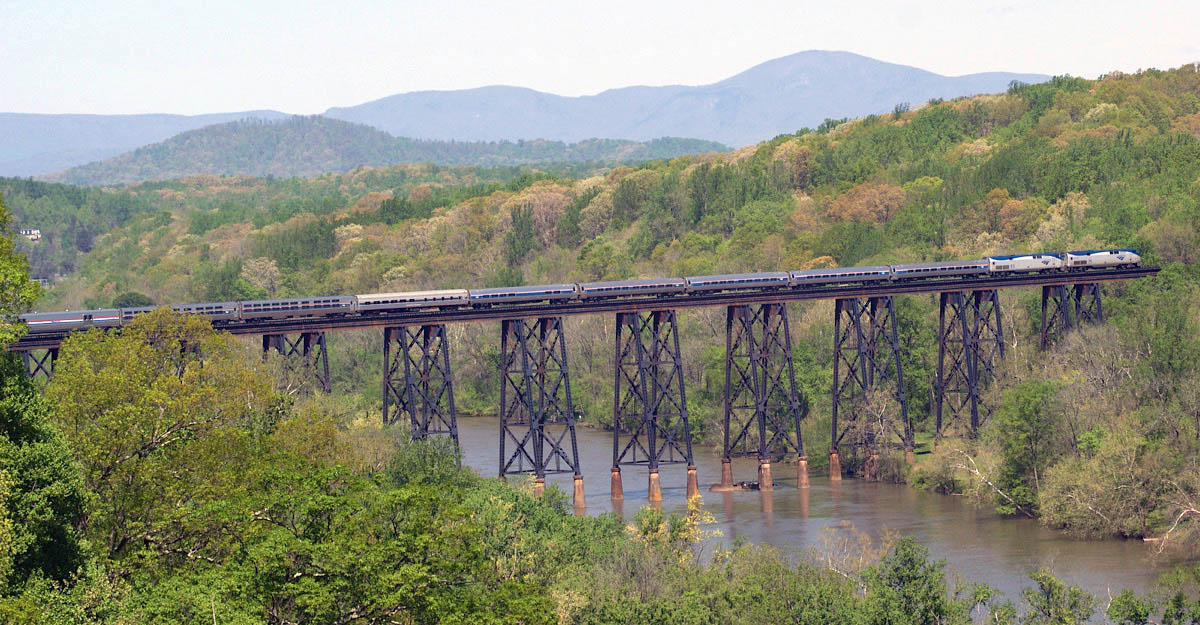
Lynchburg, Va / Apr 2015 / Garland Harper
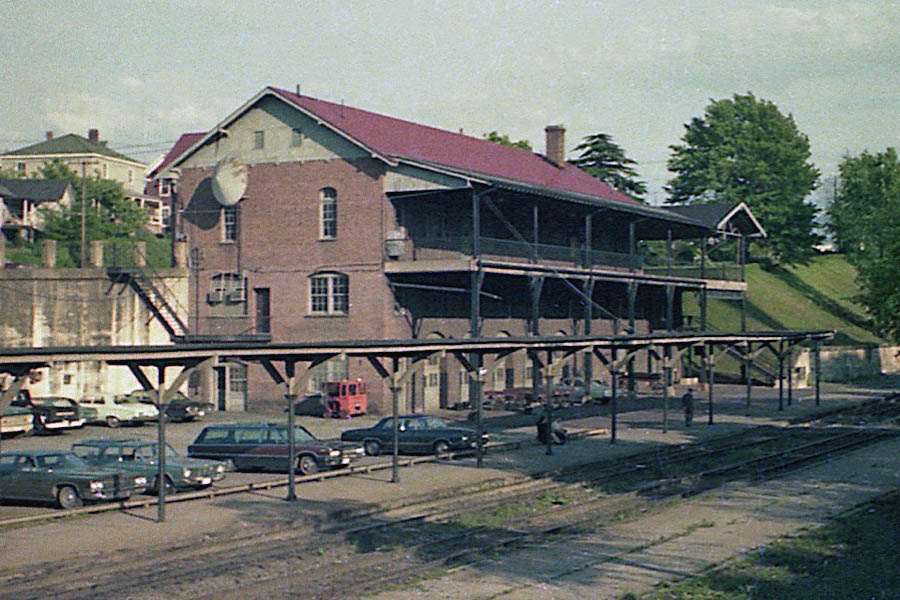
Kemper Street Station
Lynchburg, Va / May 1973 / Garland Harper
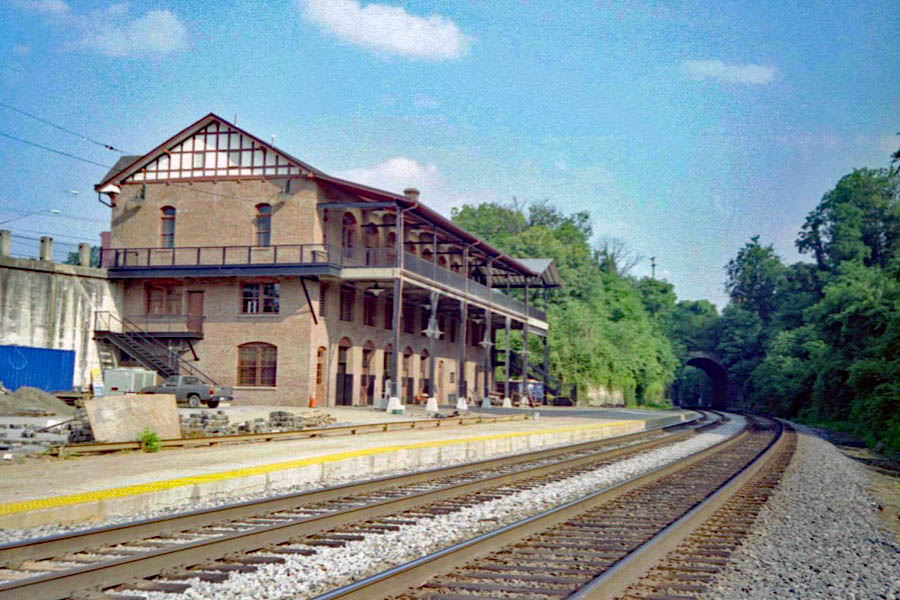
Lynchburg, Va / Jul 2001 / JCH
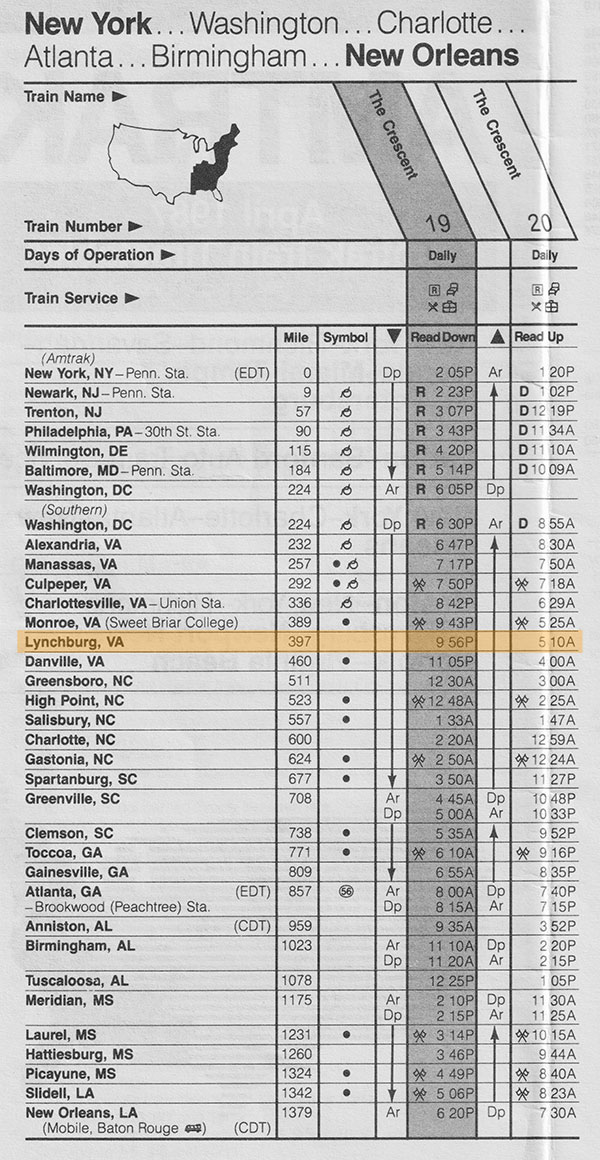
1987 Amtrak timetable / collection
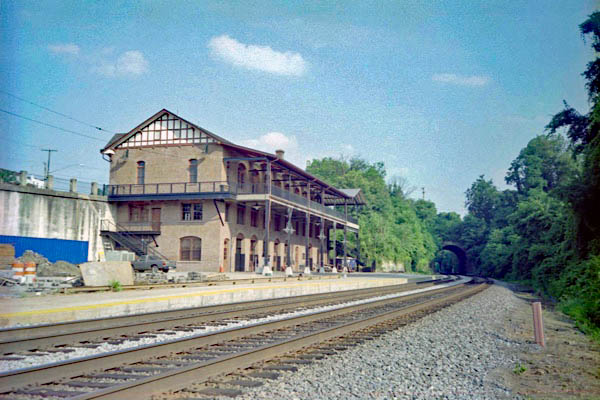
Lynchburg, Va / Jul 2001 / JCH
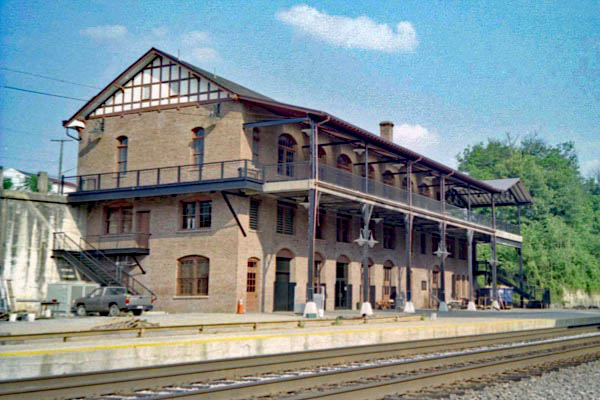
Lynchburg, Va / Jul 2001 / JCH

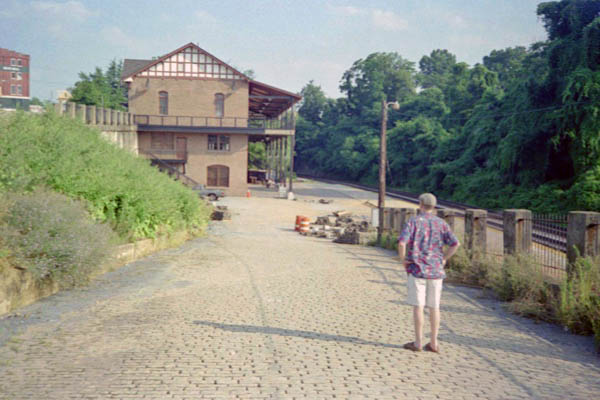
Lynchburg, Va / Jul 2001 / JCH

Lynchburg, Va / Jul 2001 / JCH

Click to see Amtrak's Lynchburg station plotted on a Google Maps page

from Southern Railways Depots - Volume 2
- Ralph Ward / collection
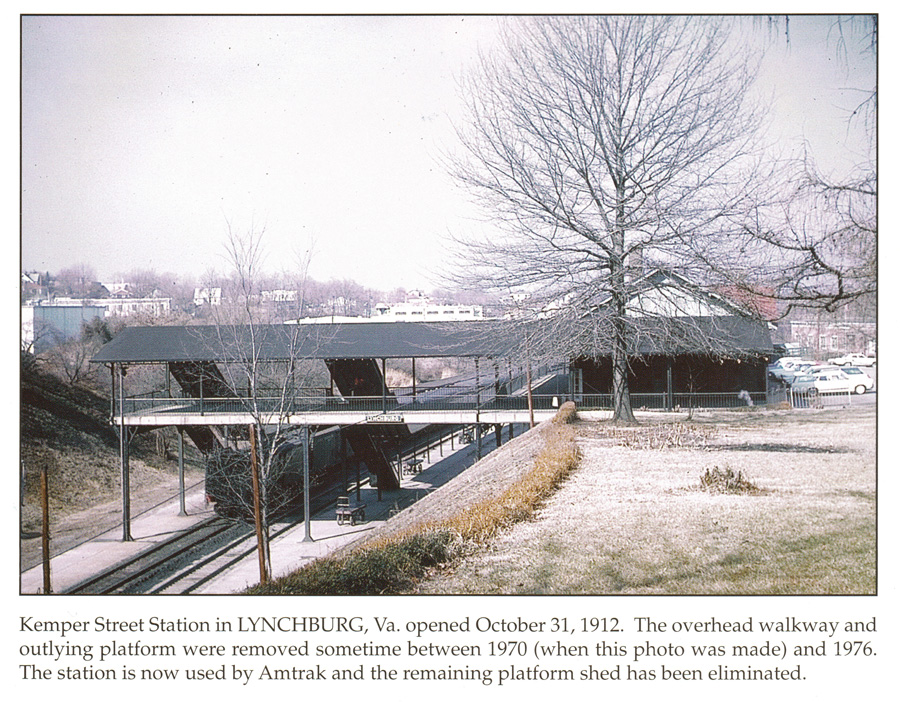
from Southern Railways Depots - Volume 2
- Ralph Ward / collection
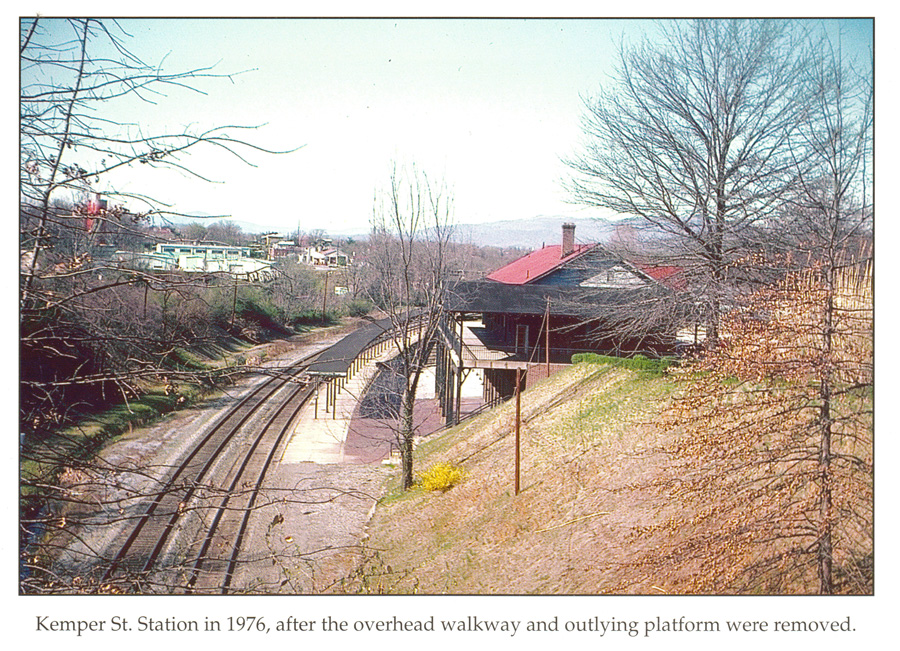
from Southern Railways Depots - Volume 2
- Ralph Ward / collection

Lynchburg, Va / Sep 1984 / Garland Harper
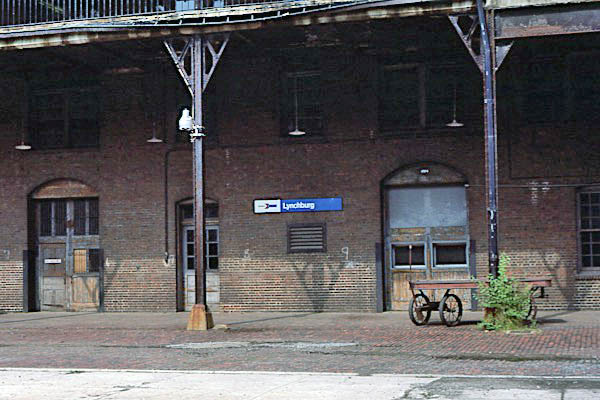
Lynchburg, Va / Jun 1984 / Garland Harper
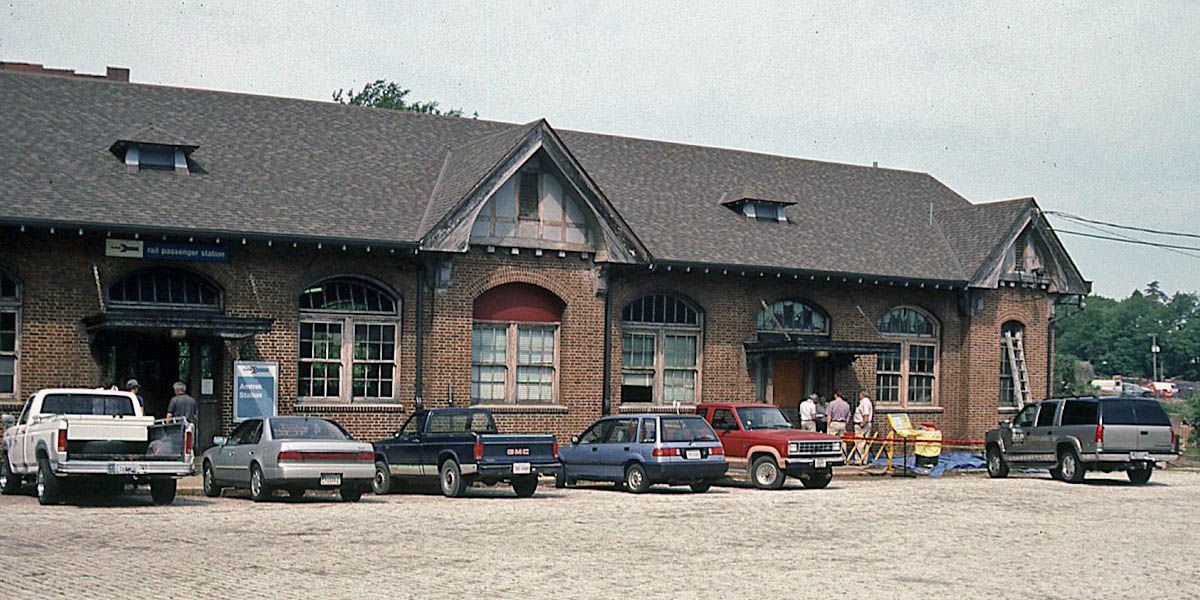
Lynchburg, Va / May 2000 / Garland Harper
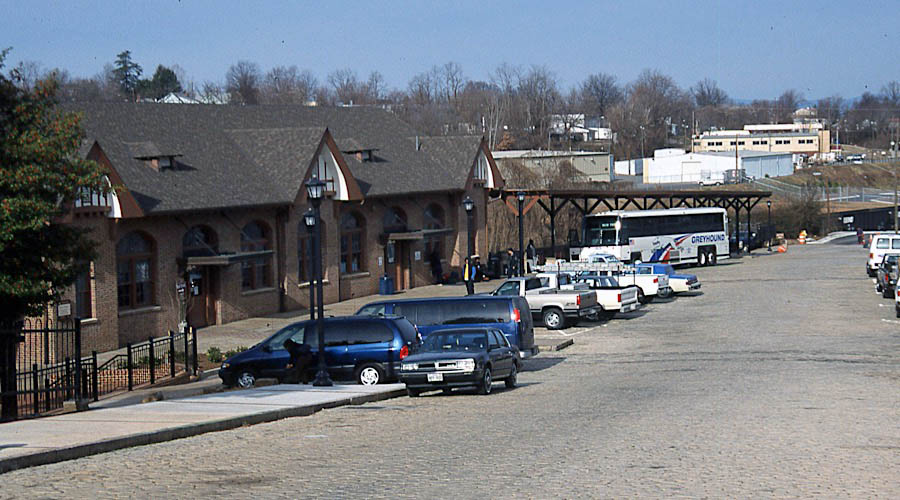
Lynchburg, Va / Jan 2002 / Garland Harper
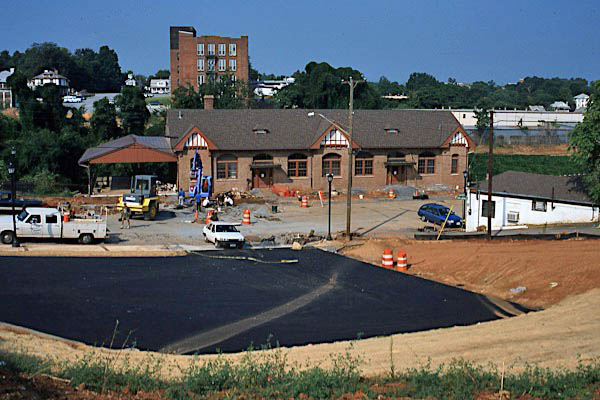
Lynchburg, Va / Aug 2001 / Garland Harper
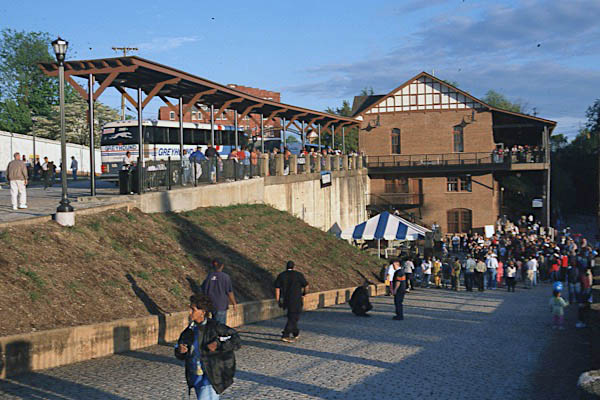
Lynchburg, Va / Apr 2002 / Garland Harper

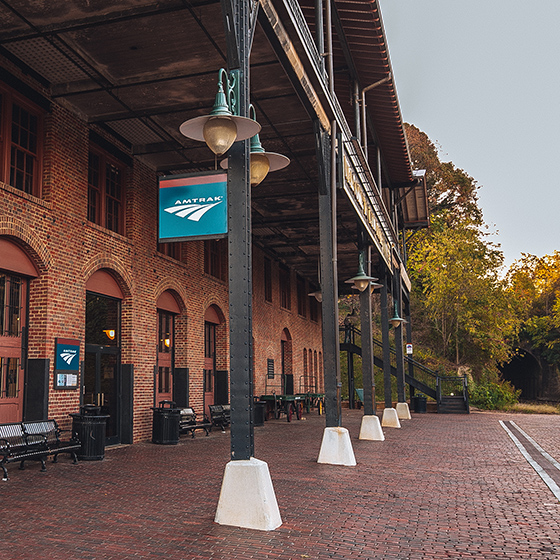
 he Kemper Street station, southwest of downtown, began serving passengers on the Southern Railway line when it opened in 1912. Originally, there was a walkway over the tracks to another platform, but it was later removed. Built into the side of a hill, the station can be entered from two levels. The top floor, which contains office space, fronts Kemper St. Rail customers access the Amtrak waiting room on the ground floor via a staircase on Kemper St., or by using a driveway on the north side of the station that leads to the lower level and platform.
he Kemper Street station, southwest of downtown, began serving passengers on the Southern Railway line when it opened in 1912. Originally, there was a walkway over the tracks to another platform, but it was later removed. Built into the side of a hill, the station can be entered from two levels. The top floor, which contains office space, fronts Kemper St. Rail customers access the Amtrak waiting room on the ground floor via a staircase on Kemper St., or by using a driveway on the north side of the station that leads to the lower level and platform.
Over the years, Kemper Street station was neglected and fell into disrepair. The Lynchburg City Council’s determination to save the structure led to a redevelopment effort. In 2000, work began on an extensive restoration including the roof, utilities, boiler system, a historic museum display and new visitors’ center. Emphasis in design was on maintaining period lighting, finishes and the existing historic fabric of the train station. On April 26, 2002, the city of Lynchburg celebrated the restoration of the building, which in addition to transportation uses included space that could be rented for offices.
This city was named for its founder, John Lynch, who at the age of 17 started a ferry service across the James River in 1757. In 1786, the Virginia General Assembly granted a town charter to Lynch. Lynchburg was incorporated as a town in 1805 and as a city in 1852. The Society of Friends was the first religious group to settle here. Lynchburg today is often called the “City of Churches” for the large number and variety of religious buildings found in the city.
Tobacco, iron, and steel were the chief industries in early Lynchburg, making it one of the wealthiest cities per capita in the United States in the latter part of the 19th century. Transportation facilities included the James River Batteau, and later the James River and Kanawha Canal, then four railroads through the city, including the Virginia and Tennessee Railroad and the Norfolk and Petersburg Railroad.
Lynchburg served as a major storage depot during the Civil War, as well as a burial place for many of the war’s casualties. The breastworks for the defense of the city can still be seen at Fort Early. Lynchburg is also close to the Appomattox Court House, where the Civil War ended on April 9, 1865.
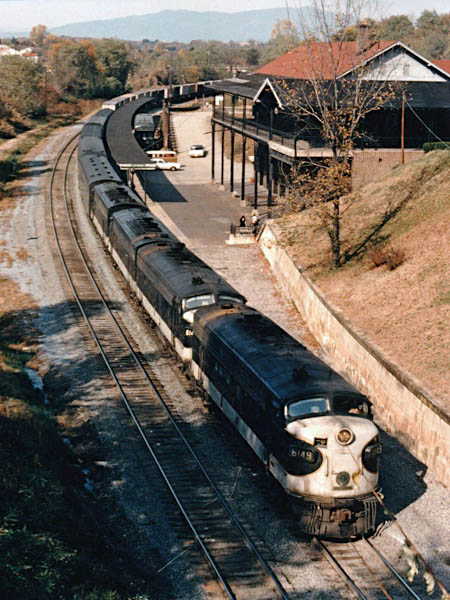
collection

Lynchburg, Va / 1970s / collection

Lynchburg, Va / 1970s / collection
 Lynchburg, VA
Lynchburg, VA
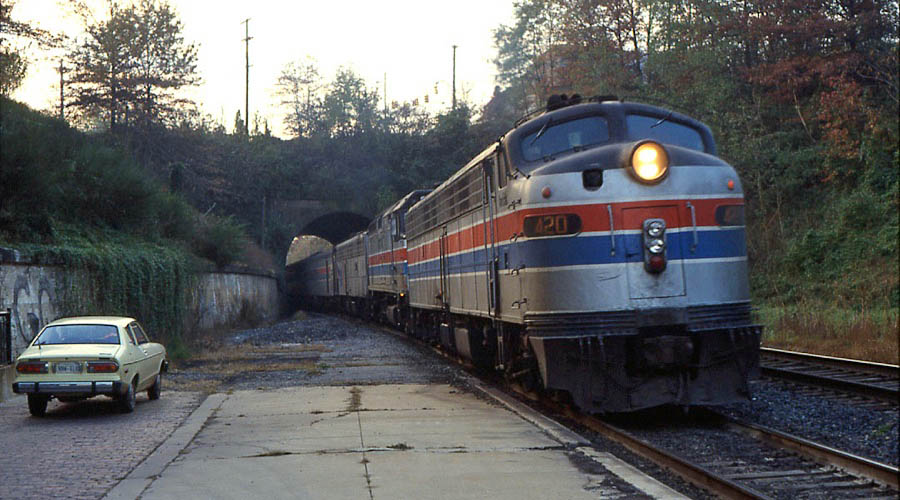
Lynchburg, Va / Oct 1979 / Garland Harper

Lynchburg, Va / Aug 1993 / Garland Harper
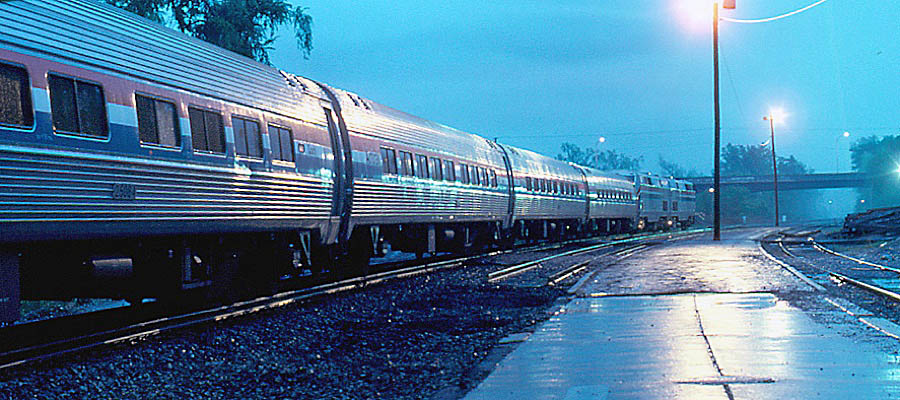
Lynchburg, Va / Apr 1995 / Garland Harper
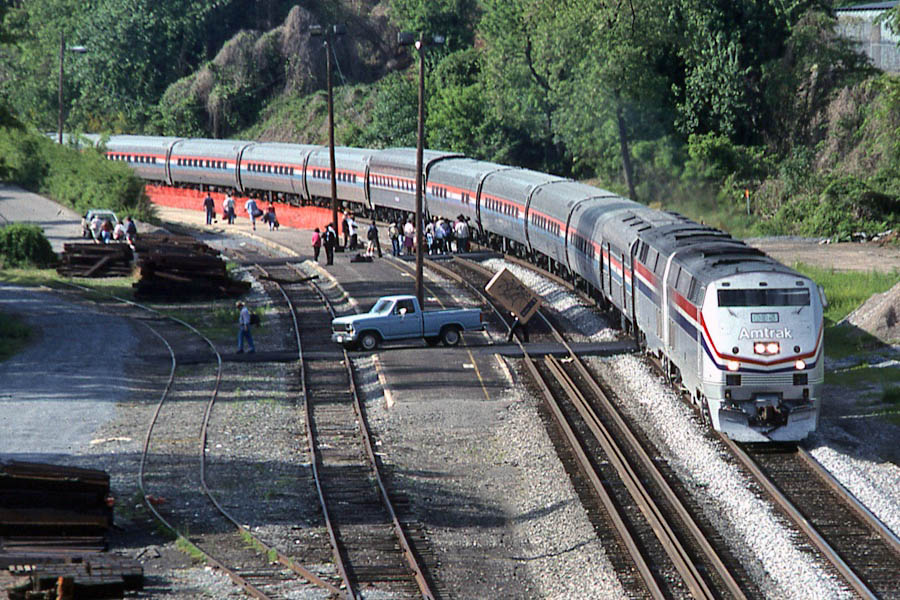
Lynchburg, Va / May 1995 / Garland Harper
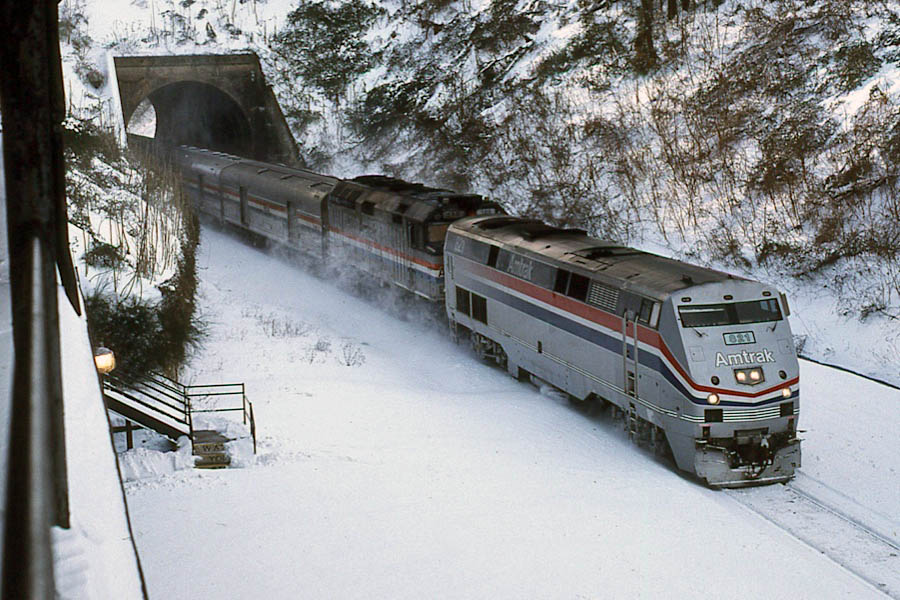
Lynchburg, Va / Jan 1996 / Garland Harper
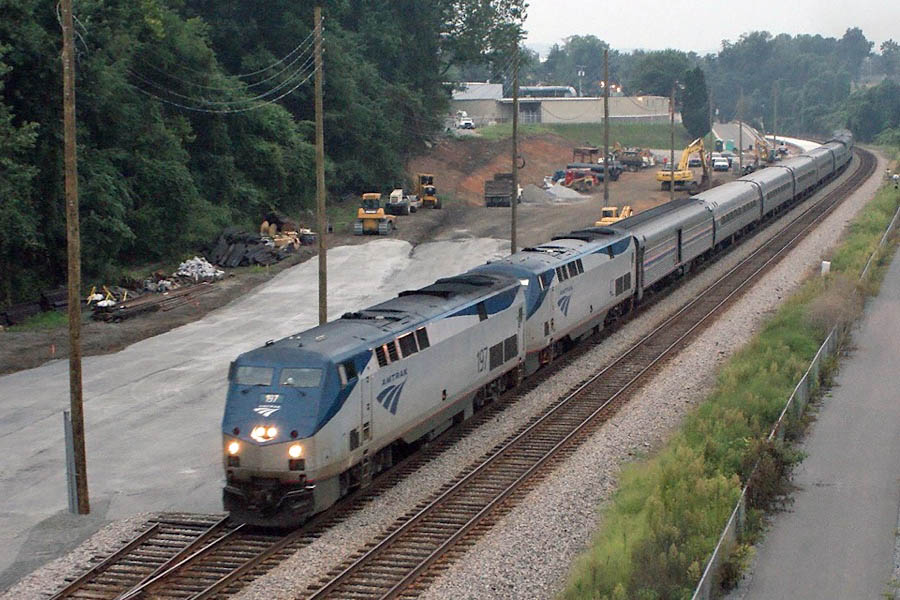
Lynchburg, Va / Aug 2009 / Garland Harper
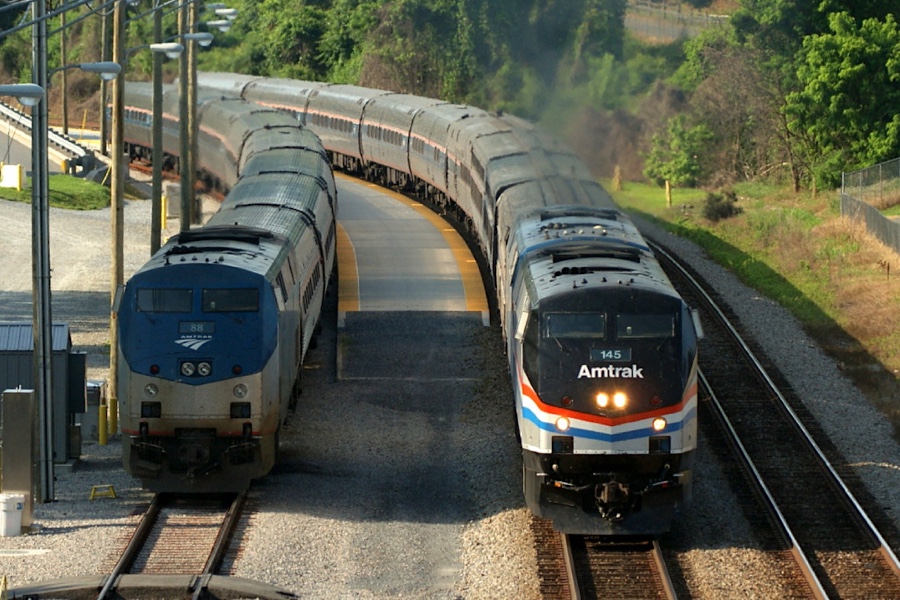
Lynchburg, Va / May 2012 / Garland Harper
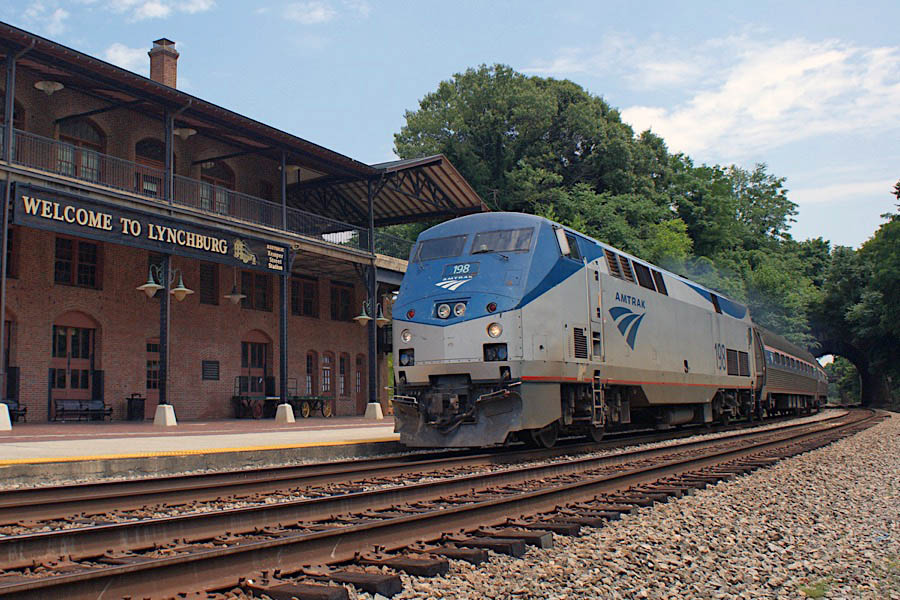
Train #198 / Lynchburg, Va / Jun 2017 / Garland Harper
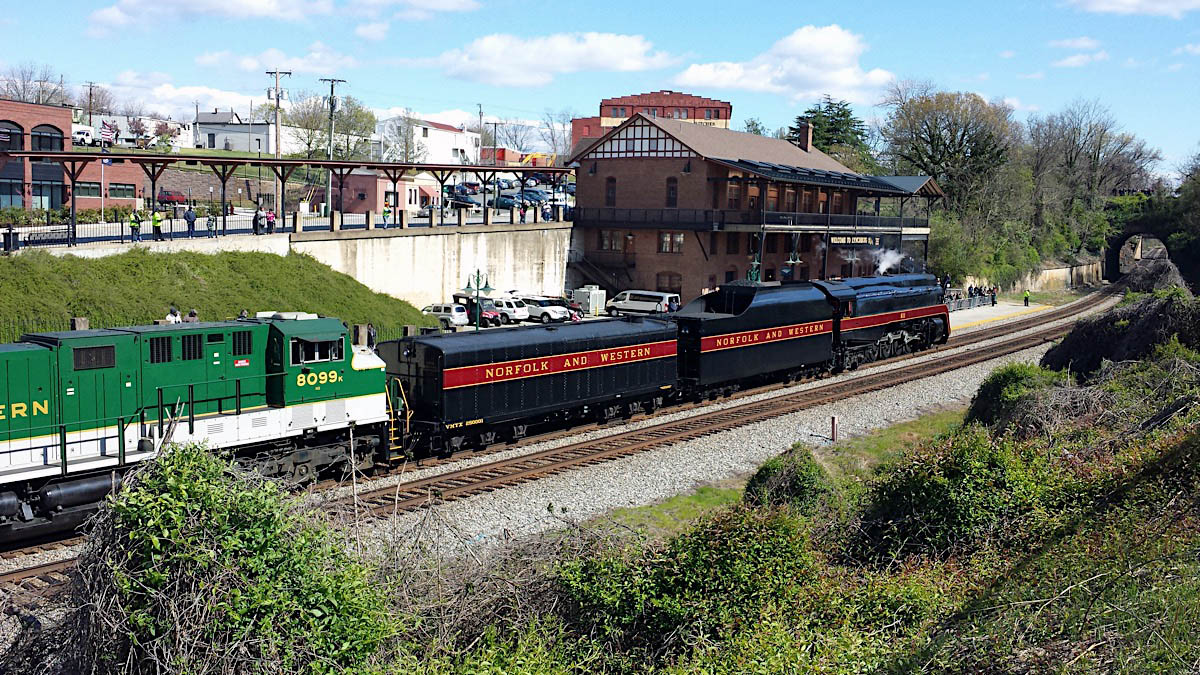
Lynchburg, Va / Garland Harper

See next our Crescent Central States scrapbook here in Mainlines
